


relax, we got you covered...





























































relax, we got you covered...





































































At CANNA Research, we are continuously testing our products in order to make improvements. In May 2024, RHIZOTONIC will be getting an upgrade! When using the improved product you will experience increased effectiveness and tank stability. The shelf life has doubled from one to two years and you no longer need to worry about raised pH levels in your tank when applying the product. For growers, who were using RHIZOTONIC before, rest assured you will not need to change the way you use it and you can still expect exceptional results from your plants.



























Harvest season is the heart of the gardening year. It’s when all the planning, planting, and care finally pays off. For gardeners, it’s not just about collecting flowers, fruits, or vegetables; it’s the reward for months of patience, observation, and nurturing. There’s a deep satisfaction in holding something you grew yourself from seed or clone and knowing exactly what went into it.
Whether you’re pulling tomatoes off the vine or digging up fragrant garlic, harvest season connects you to nature and your effort. If you’re like me, much of what gets harvested gets eaten immediately. Berries, sugar snap peas, and carrots are devoured quickly, but others, like tomatoes, potatoes, and herbs, are grown in such abundance that I have to learn different methods for long-term storage.

This edition offers many insights into this exciting time of year for any gardener. To quote Colin Bell, “Preserving herbs is a high-stakes race against degradation—the natural breakdown of key compounds after harvest. Whether you’re drying basil for culinary excellence or chamomile for soothing teas, one wrong move in curing can turn your prize harvest into flavourless rubble.” Fear not, because in “A Scientific Guide to Preserving Quality”, Colin explains what we need to do, and perhaps more importantly, why we need to do it to get the drying and curing stage just right.
Before the harvest season starts, ensure that your plants have everything they need, or eliminate anything they don’t. In “Finishing Strong: Getting Nitrogen Right in Living Soil”, by Gareth Hopcroft, he offers advice on how to avoid having too much available nitrogen in living soil towards the end of the plant’s life. Check out the Author Spotlight to learn more about Gareth.
Whether it’s fruits, vegetables, or herbs, this edition will provide you with tons of tips and advice on how to store and preserve your precious crops so that you can enjoy them for months to come.
If the idea of closing down your garden and having to wait half a year to start up again makes you sad, this doesn’t have to be the end. Take a trip to your local indoor gardening shop. They have everything you need to grow indoors, all year round.
Happy Harvest.

SPECIAL THANKS TO:
Alex Field, Anne Gibson, Catherine Sherriffs, Colin Bell, Everest Fernandez, Gareth Hopcroft, Haley Nagasaki, Jennifer Cole, Martyna Krol, Regi Oneton. Tyler Simmons, Xavi Kief & Sophie Ora from Gro-Org.
PRESIDENT
Eric Coulombe eric@gardenculturemagazine.com +1-514-233-1539
VICE PRESIDENT
Celia Sayers celia@gardenculturemagazine.com +1-514-754-1539
EXECUTIVE EDITOR
Catherine Sherriffs cat@gardenculturemagazine.com

DESIGN
Job Hugenholtz job@gardenculturemagazine.com

INTEGRATED SALES & BUSINESS DEVELOPMENT
Haley Nagasaki Haley@gardenculturemagazine.com +1 (604) 401-7209
DIGITAL & SOCIAL MARKETING social@gardenculturemagazine.com
ADVERTISING ads@gardenculturemagazine.com
PUBLISHER
325 Media INC
44 Hyde Rd., Mille-Isles QC, Canada J0R 1A0 GardenCultureMagazine.com

ISSN 2562-3540 (Print) · ISSN 2562-3559 (Online)
Garden Culture is published six times a year, both in print and online.



DISTRIBUTION PARTNERS
• Creation Wholesale
• One Love Inc
© 325 Media
• Highlight Horticultur e
• HydroGarden
All rights reserved. No part of this publication may be reproduced, stored in a retrieval system or transmitted in any form or by any means, electronic, electrostatic, magnetic tape, mechanical, photocopying or otherwise, without prior permission in writing from 325 Media Inc.
Gareth Hopcroft has been passionate about plants for most of his life, and we’re fortunate to have his voice in Garden Culture Magazine. The owner of Ecothrive, Gareth is a veteran in the UK hydro industry and has a wealth of knowledge to offer when it comes to both indoor and outdoor growing. We know you’ll love his articles, so you should probably get to know him a little better, too.
You are a self-proclaimed ‘plant geek’. How did you become so interested in the growing world?
Plants have always fascinated me. I remember growing cacti on my windowsill when I was about 10 or 12 years old; some of them are still with me. I was also intrigued by my grandad’s vegetable patch at the bottom of his garden, and my best mate’s dad was a passionate orchid grower with all kinds of gadgets rigged up in his greenhouse. All of that must have rubbed off on me. I got properly into plant biology at school, which led me to study Natural Environmental Science at Sheffield University, where I chose mostly plant science modules. After graduating in 2004, I started working at a local hydroponics shop that also made liquid nutrients. I eventually managed their showroom and research greenhouse—that’s where I really got hooked on greenhouse veg production. Since then, the ball’s just kept rolling. Now, I’m surrounded by plants both at home and at work, and I wouldn’t have it any other way.
Do you prefer growing plants indoors or outdoors?
I honestly love both. At one point, I had three allotments, mostly for growing fruit and veg. These days, I spend more time indoors, caring for my collection of over 100 tropical Aroids. They’ve definitely taken over!
What is one of your favourite plants to grow?
It’s so hard to pick just one, but right now I’m really into Alocasias. I’ve been experimenting with cross-pollinating a few varieties this year— fingers crossed I get some viable seeds!

How do you like to spend your time outside of work?
If I’m not fussing over my tropical houseplants, I’m probably out walking in the Peak District or grinding curbs on my skateboard.
What’s your favourite food?
That’s a tough one! Right now, it’s either purple Heartthrob tomatoes or some good, sloppy scrambled eggs. 3
Are you interested in writing for Garden Culture Magazine?
We’d love to hear from you! Send us an email introducing yourself with a sample of your work editor@gardenculturemagazine.com

Since 1994
Time and time again, both reps and customers say the same thing — once growers try HY-GEN, they tend to stick with it.
Once HY-GEN, Always HY-GEN




































Imagine brighter, healthier plants thriving in a sleek, top-quality, highly reflective environment that’s as tough as it is brilliant. The new BudBox WHITE LITE range is built for performance, engineered for ease, and priced to move, offering unmatched light distribution that boosts your yields like never before. Available in 60x90x90cm or 120x120x180cm, our launch stock is strictly limited.The buzz is already growing, so contact the team at BudBox today - don’t miss out! Innovation this hot won’t stay on the shelves long! Trade sales only.
Check BudBoxGrowTents.com for a tent that is right for your grow.

The Gorilla FlexPro range delivers tough, space-saving water storage for any grow setup. Designed for both indoor and outdoor use, these heavy-duty collapsible tanks are quick to assemble, easy to pack away, and built to last. With sizes ranging from 50L to 750L, they suit a wide range of applications, from small-scale systems to large horticultural operations. Each tank comes with a pre-welded connection for leak-free fitting and a secure tap for effortless flow control. Ideal for hydroponics, irrigation setups, or general water storage—FlexPro Tanks do the job with zero fuss.
Exclusively available from Highlight Horticulture.

Grenade Black is an advanced organo-mineral flowering additive that naturally maximises dense, heavy, and healthy yields. It’s a 100% natural hardener, PK+, and finisher, combining high-quality minerals with amino acids, phytohormones, and other biological co-factors.
It increases plant energy (ATP) and optimises sulphur content for enhanced secondary metabolite production. Key ingredients include amino acids, cytokinins, gibberellins, polysaccharides, betaines, auxins, proteins, enzymes, carbohydrates, and trace minerals.
Guaranteed analysis: N - 3%, P - 9%, K - 19%, plus Sulfur (S), Iron (Fe), and Boron (B).
Dose rate: 0.2 ml - 0.4 ml/L during weeks 3-7 of the flowering cycle. Compatible with all nutrient regimes. Add Grenade Black first, then other nutrients until the desired EC is attained. It has an EC of .2 and doesn’t affect pH.
Find a stockist at GrenadeNutrients.com

Speed up ripening, boost your results. FinalPart® is a mineral ripening formula used at the end of the plant’s life cycle to improve yield, flavour, and overall quality.
Applied just before harvest, it enhances flower and fruit production while concentrating taste and aroma. For vegetable crops, it helps to produce richer, tastier harvests.
FinalPart can also be used in urgent situations, including pest attacks, extreme weather (heat, frost, storms), or before going away. Easy to use in soil, coco or hydro systems.
Check out TerraAquatica.com for more info.


Support your plants from the root up with the combined power of HYGROZYME® and HYGROBEN™.
HYGROZYME® is a concentrated enzyme formula that accelerates the breakdown of dead root matter, preventing root rot and unlocking nutrients for better growth. Made with natural ingredients and optimised for ideal pH and temperature conditions.

HYGROBEN™ is a microbial root inoculant feacompatible Bacillus species that enhance root health and boost yield. Suitable for a variety of crops and growing systems.
Used together, they create a cleaner root zone and healthier rhizosphere—so your plants can reach their full potential.
Ask for it at a store near you. Visit Hygrozyme.com for resources and feed charts.


A premium organic soil blend that’s ready to use straight out of the bag. It’s packed full of the highest quality organic inputs to support fast-growing, demanding plants in intensive cultivation environments. Ecothrive Living Soil is coco coir-based and packed with beneficial microbes and bioavailable nutrients, delivering balanced and sustained nutrition from seed to harvest.
Designed for reuse, it can be quickly refreshed with Soil Food Re-Gen after each cycle, making it easy to maintain a rich and balanced soil, crop after crop.
Grow Greener with Ecothrive! Available now at Ecothrive.co.uk.

VGN fertilisers are the result of transforming plant waste into solutions for your plants. With these liquid fertilisers, you nourish the plants while supporting beneficial soil micro-organisms. VGN products are also certified for organic farming by Control Union.
• VGN 5-2-2: Nitrogen for greener, healthier plants.
• VGN 2-2-4: Potassium for stronger, more robust plants.
• VGN 1-4-4: Phosphorus & Potassium for rich flowering.
• VGN CALMAG: VEGANIC calcium & magnesium supplement. Combine and adapt them to the needs of your plant!
Find the VGN line in your favourite store! Visit atami.com/vgn for more info.
Psycho Myco is a cutting-edge, water-soluble powder that combines mycorrhizal fungi, Trichoderma, and beneficial bacteria in one powerful formula. It supports rapid root colonisation, helping plants absorb nutrients and water more efficiently while improving resilience to stress and transplant shock. Growers can expect explosive root growth, more vigorous plants, and increased yields, with enhanced flowering and fruiting. Easy to apply and fast-acting, this single product does it all, driving vigorous performance above and below ground.
Available from Highlight Horticulture.


Quest Climate delivers high-performance dehumidification tailored for indoor cultivation. Quest offers three models ranging from 70 to 700 pints per day (33–331 litres), delivering options for any size facility. Built in the USA and trusted by professional growers worldwide, each unit is engineered for energy efficiency, reliability, easy maintenance, and long-term cost savings. Whether supplementing your HVAC or managing climate independently, Quest puts you in control.
Four new models are coming soon—stay tuned. Available through Dutch Garden Supplies

















The next generation of DAYLIGHT LED has arrived.The 1030W PRO is our most advanced fixture yet, delivering 3193 μmol/s of full-spectrum output with 3.1 μmol/J efficiency for powerful, even canopy coverage. Enhanced with added Far Red and featuring a redesigned 10-bar chassis with improved bar connectors, it’s built for durability, performance, and total control. Passive cooling ensures silent operation, while onboard and remote dimming make it easy to dial in light levels. CO2 supplementation is recommended to unlock its full potential. Backed by in-house testing and trusted by professionals, the 1030W PRO sets a new benchmark in high-performance LED horticultural lighting.
Exclusively available from Highlight Horticulture.Visit GrowWithDaylight.co.uk for more information.
When it comes to cultivating organically, Biobizz substrates are a grower’s best ally. All·Mix is a readyto-go powerhouse - a rich, living soil pre-fertilised to support robust plant growth for weeks with minimal input. Designed to mimic the complexity of outdoor ecosystems, it fosters strong roots and vibrant foliage while naturally regulating pH. Just moisten, let it activate, and allow nature to take its course.
Prefer more hands-on control? Light·Mix offers a cleaner slate, perfect for seedlings, cuttings, and nutrientsensitive plants. It encourages rapid root development while allowing growers to tailor feeding schedules without risk of over-fertilisation. Its excellent drainage makes it ideal for automated irrigation, ensuring your grow stays balanced and breathable.
Both blends feature Biobizz’s signature organic base, no harsh chemicals, just a thriving environment for natural growth.Whether you’re nurturing a jungle or just getting started, these substrates provide the perfect foundation.


Visit Biobizz.com to learn more about their products.



Perfect for smaller grow spaces, the new Varidrive 360W LED delivers exceptional reliability and performance without the bulk.

With a PPF of 1040 μmol/s and PPE of 2.89 μmol/J, this full-spectrum fixture is the ideal upgrade from a 600W HPS, offering more light with lower running costs. Designed for durability and ease of use, it’s robust, low-maintenance, and engineered to run cool and efficiently—no fuss, just consistent performance. Whether it’s a small-scale setup or part of a multifixture installation, the Varidrive 360W is a smart, efficient lighting solution engineered for results.
Exclusively available from Highlight Horticulture

Basis A contains a premium mix of EDTA-chelated red iron and calcium, together with other essential micro and macronutrients. One of the standout benefits of EDTA red iron is its ability to remain stable and available to plants across a wider pH range. Iron is typically less available to plants in alkaline soils (high pH), but EDTA red iron can maintain its solubility and effectiveness even in these conditions.
Basis B contains all the essential minerals your plant requires, as well as additional nutrients like molybdenum and magnesium. These elements will optimise water and nutrient uptake while enhancing cell division to promote excellent plant growth.
Basis A&B is used in equal parts to provide a highly concentrated biomineral base solution.Together, they work to deliver optimal nutrition at a broader pH range, promoting plant health and exceptional growth throughout the entire grow cycle. Basis A&B is designed to be used in conjunction with the Mills six-bottle system. If you’re looking for advanced results, consistency and a simplified process, look no further than the Mills nutrient range.
Visit GrowWithMills.co.uk to find out more.













Introducing the PAR Meter Test any grow light with accurate PAR readings and data logging.
LIGHT MEASUREMENT RANGE:
0 to 3999 μmol/m²/sec
PRECISION READINGS:
Repeatability of +/-1 μmol/m²/sec




How does walking into a hydro shop differ from shopping or searching online? The individual and tailored advice, of course! Sophie Ora of Gro-Org in Swansea is a firm believer in understanding all of the products she sells and listening to her customers so she can help solve any growing problems they face. If she doesn’t have the answer, she’ll find someone who does. That’s what differentiates a physical store from an online retailer, and we have to admit, that’s pretty important. Read on to see what else Gro-Org revealed in Garden Culture’s confession booth!




How long have you been in business, and where is your location? We have had three locations to date, starting in 2008 with the smallest high street store in the industry (we think). This was a logistical nightmare for pallets of soil and other materials, but it was a great start for us. We then moved to a substantially larger unit in 2012, where we custombuilt the interior to suit our needs. Unfortunately, we had a fire in 2013, and because we weren’t insured (long story), we lost everything. I took over the sole running of the business after that, and we were back open and trading without a shelf to our name within two months of the fire and here we are today! It was a tough time, but we had a very loyal customer base who found and supported us. We are so grateful to them and can’t thank them enough for their support over the years.
What are some of your secrets to success as a retail store? Trust, above everything. Good advice, no BS, product knowledge, and problem solving. Never pretend you know what you’re talking about. If I can’t help, then I’ll know someone in the industry who can, and if I don’t know, I’ll say so. I’m quite straight-talking. I don’t let anyone leave my shop with something that I don’t honestly believe will benefit their garden.
What have you done wrong that you would love to get another crack at? That’s a tricky one. I’m not sure how to answer that, as it’s all been a learning curve. I don’t think you can look back. It’s all progress, even the tough times.
There are very few female shop owners. Do you see it as an advantage or disadvantage? I’m not sure why there are so few female shop owners. There is a massive underrepresentation globally. I know of about three other quality shops in the UK run solely by awe-inspiring, dedicated, and knowledgeable women. I don’t think it’s an advantage or a disadvantage in terms of business. We are all here to be successful. I’m used to working in male-dominated professions, so it doesn’t faze me, but I guess it may be intimidating. I do get moments of being underestimated, but I let it slide. I’ve got nothing to prove.
Figure 1
What’s the most significant change in the industry that you’ve noticed in the last five years? The launch of LED lighting has probably been the biggest change to the industry. The second most significant change would be the foot traffic through shops and the increase in online sales. Competition on prices and the ‘race to the bottom’ attitude to a oncethriving business has seen a lot of great shops struggle. There are whole areas in the UK devoid of a physical store, and that’s not something I ever thought would happen. To survive in the current climate, you must diversify. It’s a tough time for hydro stores in the UK.
In your opinion, are people more educated or more confused thanks to (mis)information they find online? The online forums keep me entertained if nothing else. Even excellent growers look for information and run things past me for clarification. Some of it is mind-blowing, but the problem we face is that there are numerous variables in a grow room, including the grower, the plant, and genetics. You have to carefully examine everything to identify the possible problem, and that requires skilled, tailored advice that you can’t find in most online forums. Shops are often undervalued nowadays for their product knowledge and problem-solving capabilities.
What’s the biggest myth about plant supplements that drives you crazy, and how do you explain the truth to customers without bruising their egos? The biggest myth might be that all PGR products are bad. It’s tricky trying to educate growers about natural PGRs like auxins, gibberellins, and cytokinins. The assumption is that if a product works, it must be synthetic or chemical. Wrong! Years of research have given me a solid foundation to explain this to customers who appreciate the idea of natural alternatives to the harsh synthetic products they are often offered. Bruising egos is par for the course. I always make it clear that we are all beginners at something. Most of my clients have learned with me, and many have taught me, so we have a mutual respect.
Apart from your product, what are some of your favourites? I love the Autopot system, Ecothrive’s 70/30, Great White & the BAC organic range, Biobizz, Plagron. There’s a lot to love out there! Some great companies and innovators.
What is your favourite plant to grow? Indoor citrus trees. My shop display is my baby, and I often have people asking if it’s fake. It’s not!
In case our readers don’t already know, you are also one of the owners of Grenade Nutrients. Where did the idea for Grenade come from, and how do you balance your retail business while building a new brand? The idea for the brand name and bottle came from my business partner. He showed me a bottle in mid-2022, and I knew I had something great in mind to put in it, so I invested. The first product, Grenade Black, was a combination we created to combat synthetic, chemical PGR hardeners. We sought a natural alternative because there was a gap in the nutrient-fatigued market for something special, with high-quality inputs and integrity. We wanted a product that didn’t alter the plant genetics but would enhance the taste, flavour, and density of the plant naturally, with a couple of beneficial plant stress-relieving elements. Then we launched Grenade Green in August 2024 and introduced something a bit different from the norm, incorporating a few inputs rarely, if ever, used in our industry, such as collagen. It’s important to us that we have unique, groundbreaking products. There are enough replicas of great products out there, and we didn’t want to be one of them. Balancing the brand with the store was difficult because I work six days a week. We branded it ourselves and designed everything; we bottle, label, and distribute it. We have a clear vision of what we want, and for that reason, we do everything ourselves. We strive to be a direct link to our customers, providing expert advice and product knowledge. It’s a lot of work, but I love it, and I’m very lucky to have two boys who will look after the store for me, allowing me to conduct research, visit, and exhibit at European shows, as well as travel around the UK to see shops. It’s a product that I’m proud of. You should all try it! 3
Want to be the next Hydro Store to ‘confess’?
Take a picture of this edition of Garden Culture Magazine in your shop, post to Instagram and tag @gardenculturemagazine OR Send your info to social@gardenculturemagazine.com


Isn’t harvest time the most anticipated reward for growing an edible garden?

for Vegetables, Herbs & Flowers
Isn’t harvest time the most anticipated reward for growing an edible garden? Picking homegrown produce for meals, medicine, and herbal teas is one of life’s joys. These are a few techniques I use to extend the harvest, optimise yields, flavour and nutrient value, and minimise waste.
Harvesting root crops in the waning moon has helped me prolong their storage life, as they are less likely to rot. This is also an ideal moon phase to collect seeds for storage and drying
Maximise Nutrient Value – Harvest food as close to eating to reduce the loss of valuable nutrients. For example, snow peas lose 50% of their vitamin C within the first twelve hours after picking. Alternatively, blanch and snap-freeze surplus fresh produce immediately after harvesting to preserve the nutrients.
Harvest Early Morning – Leafy greens have the highest water content early in the day before the plants start transpiring. A quick rinse after harvesting and storing in the fridge helps preserve nutrients. It may be more convenient to pick salad ingredients or leafy greens late in the day before making dinner, but this is when they are often heat-stressed and may be wilted.
Extend Storage - Harvesting root crops in the waning moon has helped me prolong their storage life, as they are less likely to rot. This is also an ideal moon phase to collect seeds for storage and drying.
Optimise Flavour and Medicinal Potency of Herbs –We don’t just pick flavour-packed herbs to improve the taste of our meals. They also have medicinal properties, and the harvesting time affects their therapeutic vitality. Maximise the nutrient value, phytochemicals and essential oils when making remedies. Harvest herbs like basil, lemon balm, and mints before they flower or snip the blooms off as they form if not saving seeds. If the goal is to dry herbs, the best time is just after the full moon. The sap is at its highest, but the energy and moisture in the plants are being drawn down into the roots, making it easier to dry the leaves.
Berries and Fruits – The best time to pick is when they are fully ripe, when natural sugars are highest, producing optimum flavour and nutrient value.
Flowers – The ideal time to pick flowers for maximum fragrance and phytochemicals is early morning when the dew has dried on the petals. With edible blooms like nasturtiums, dianthus, and cosmos, pick just before eating as garnishes in salads or baking to maximise flavour and nutritional value.
Seeds – Collect seeds for saving when they are fully mature, and the pods are crisp, brown and dry. This indicates they have the maximum nutrients for successful germination and the next generation of plants.
Many crops can be replanted for a second harvest. A few of the vegetables and fruits I regrow from plant material include:
• Leeks – Slice the stem at the base but leave the roots and about 1-2 cm of the stem in the soil. A new leek regrows much faster, so you get two for the price of one!
• Spring Onions – Leave these vegetables in the soil and snip the outer leaves from several plants, rotating around the garden. This allows each plant to photosynthesise and keep producing leaves for longer.
• Celery, Asian Greens and Lettuce – Regrow these leafy greens in two ways. Cut above the stalk base of these leafy greens and leave the roots in situ in the garden bed or pot. After liquid fertilising, new leaves appear. Alternatively, add the base to a shallow plate with a bit of water, and then, once new roots and shoots have grown, transplant it to a pot or the garden.
One of the ways I maximise the value of each plant in my garden is to use different edible parts during the growth phase. This depends on the vegetable, fruit, or herb but can include the leaves, fruit, seeds, stem, immature seed pod, flowers, peel, bulb, or root. These are a few examples:
I use a cutlery fork to gently lever out root vegetables so I don’t damage delicate roots or flesh.
Carrots: When thinning seedlings, snip off the immature roots and add these raw, young shoots to salads. After harvesting the mature carrot root, trim the leaves immediately to reduce moisture loss, then rinse and use the tops in pesto or chop and freeze to make soup stock.
Radishes: These crunchy root crops offer so much more than just a peppery salad ingredient. Harvest young, tender leaves as salad greens while balancing enough solar panels to encourage healthy root development. The flowers are a delicious addition to salads, provided they don’t form seed heads. Radish plants produce a huge quantity of seeds on long stems with pods. The seeds are a great substitute for mustard seeds; add them to pickled vegetables, along with some of the young seed pods.
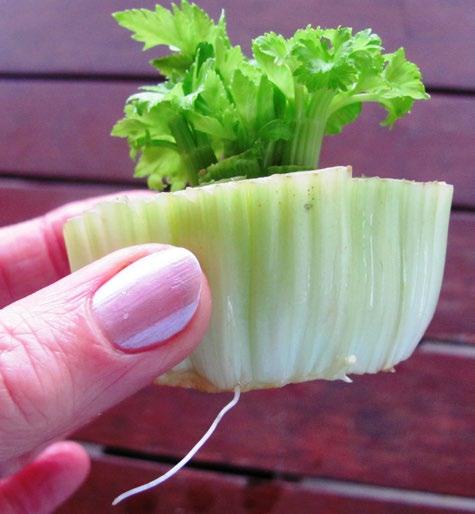



I’m out daily collecting fresh ingredients, even in small quantities, as this helps stimulate the plant to produce new leaves, flowers, and pods
Beetroot: The young beet leaves are delicious and colourful additions to our salads. Chop up the pretty red or purple stems as a substitute for rainbow chard. Add them raw to salads or cook the stems in stir-fries and curries.
Sweet Potatoes: These grow year-round in my garden, and we dig up young tubers as needed. I use tender new leaves in curries, stir-fries, and salads, both cooked and raw.

Turmeric and Ginger : Instead of digging up the root ball in winter when the leaves and stems die back, leave it in the soil. Harvest immediately before cooking or making tea to preserve nutrients, flavour, and medicinal properties. Use a knife to slice off a knob, and let the ‘mother’ plant focus energy on next season’s harvest.
Beans and Peas: The pods, young leaves, and tendrils of sugar snap and snow peas are delicious raw or lightly cooked. When harvests are abundant, pick a few edible flowers for salads and sacrifice the future peas. Extend the harvest for these vegetables by sowing both dwarf/bush peas and beans, as well as climbers, simultaneously. The bush varieties are fast to flower and produce pods for a quick harvest, while the pole beans or peas are still climbing their trellis.
Broccoli and Broccolini: Maximise these winter vegetables by harvesting the flower heads, side shoots, tender stems and young leaves. Save the mature seed pods for future seed sowing as microgreens during the warmer months when the main crop won’t grow outdoors.
Pumpkins: Pumpkins are ready to harvest when the stem closest to the fruit turns brown. Leave at least 8-10 cm of the stalk, wash and dry well, and then cure the pumpkins for long-term storage. As most gardeners know, pumpkins and squash self-sow easily from food scraps. Scrape out the fresh seeds and sow them in a clump to encourage pumpkin sprouts to germinate in one spot. When they have their first two smooth leaves, snip the stems with scissors just
above the soil and enjoy raw in salads like microgreens, or cook them in omelettes, stir-fries, curries, soups and casseroles. Alternatively, dry and season scraped-out seeds, then lightly toast them in the oven for a protein-rich snack. The pulp and stringy flesh go straight into soups.
Cucumbers, Zucchini and Squash: These fruiting crops are heavy producers. Cut the stems with a sharp knife before the zukes, cukes, or squash grow too large. Zucchinis can rapidly grow into marrows within days during the new moon phase, especially when soil moisture and sunlight are abundant. Harvest the male flowers to stuff with savoury fillings or add them to salads or stir-fries. Leave the pollinated female blooms to finish fruiting.
Herbs: Harvest herb leaves throughout the season to encourage vegetative regrowth before flowers form.
Save Planting Space: Loose-leaf cut-and-come-again lettuce varieties can be planted up close. The outer, larger, mature leaves are harvested one at a time from several plants to make a salad.
Harvest Often: I’m out daily collecting fresh ingredients, even in small quantities, as this helps stimulate the plant to produce new leaves, flowers, and pods.
Pick Small: I pick leafy greens when young and tender. Beetroot and carrots are best picked before they grow too big, as their texture becomes woody and they lose their sweetness. Beans and peas become tough when pods grow too thick and large.
These techniques have provided me with a bountiful harvest, and I hope they help you, too. 3
BIO Anne Gibson, The Micro Gardener, is an author, speaker and urban garden community educator on the Sunshine Coast, in Queensland, Australia. Anne is passionate about inspiring people to improve health and wellbeing, by growing nutrient-dense food gardens in creative containers and small spaces. Anne regularly presents workshops, speaks at sustainable living events, coaches private clients and teaches community education classes about organic gardening and ways to live sustainably. She has authored several eBooks and gardening guides. Anne shares organic gardening tips and tutorials to save time, money and energy on her popular website - TheMicroGardener.com


to improper drying, processing, or storage. A careful harvest also enables future ‘flushes’ to grow well on the original substrate. Above all, harvest day is a time to form a relationship with these magical organisms, which, for me, has enhanced my experience of mushrooms as both food and medicine.
So, are you ready for some mushroom midwifery and postnatal classes? Whether it’s your first grow or you want to get the most out of future crops, this article will guide you through when and how to harvest, as well as options for effectively drying, processing and storing your grows in tinctures, chocolates and powders.
Pick too soon, and your fruits won’t have reached their full potential – but wait too long, and you can find a mess of spores and dried-out caps or decomposing mushrooms. There are different signs to look for, depending on the species you are cultivating; however, there is generally a sweet spot when most mushrooms are mature before they start to decline.
For species with a cap and veil-like Agaricus or Psilocybe strains –a common sign that it’s time for harvest is when the veil begins to break away from the stem. Oysters don’t have a veil, but they’re good to pick as the cap edges start to lift.
Avoid waiting until mushroom caps open completely and drop their spores over the growing medium and onto each other. This can make them bitter, potentially less potent and can also deter future flushes from growing on the surface of the substrate.
Capless fungi are more species-specific. Lion’s Mane is ready when its spines are long and white before they start to turn yel-
So, are you ready for some mushroom midwifery and postnatal classes?
low. Reishi is good to go when it’s fully coloured and hardened, with no pale growth ring around the edge. It’s always worth checking your specific variety for any pre-harvest quirks.
My favourite method for harvesting most species is to gently twist and pull the single mushrooms (or clusters) away from the substrate. The art is to do this with minimal disturbance to the substrate beneath if you intend to grow a second ‘flush’ of mushrooms from the same block. Ensure your hands and forearms are clean before reaching inside any containers, and hold the mushrooms lightly to avoid damaging or bruising them. It can be useful to use a clean knife to hold down the substrate surface while you twist the mushrooms off.
Some growers prefer to cut with a knife, but the above method removes stumps and leaves the growing surface clear of rotting debris for the next round of mushrooms to grow.
For fungi with a larger surface area attached to the substrate, a clean knife is your best bet. Cut mushrooms like Lion’s Mane just above the substrate. If you want a second ‘flush’, try exposing some virgin substrate for new growth to come through (for example, you could cut a new “X” into a mushroom grow bag).
If your mushrooms are growing at a uniform rate, harvest them all at once. If you have a mixture of monsters and babies, you can gently harvest the big ones as they reach their prime and wait until the others catch up. If you’re expecting more flushes of mushrooms from the same container, you needn’t worry too much about picking too soon – the mycelial power is still in the block and will come through for future harvests.
You can cut or peel off any remaining substrate from the harvested fruits and then use, cook, or process them as soon as possible to keep them at their best.



Fresh mushrooms typically have a high surface area and can lose their potency and textural quality quickly. For short-term storage, I like to wrap my harvests loosely in a kitchen roll or a paper bag and keep them in the fridge. Most mushrooms will keep for around 3–5 days this way.
Dehydration is my preferred method for storing mushrooms longterm. With proper fast-drying and suitable storage, you can retain the majority of a mushroom’s active compounds for months or even years. Rehydrate dried mushrooms in soups and teas, or process them in other ways, as discussed below.
Tear or cut bigger mushrooms lengthways before drying and lay them out with some space between them, not piled on top of each other. If you’ve got a dehydrator, set it to around 70°C (158°F) for most species – although more delicate varieties may benefit from temperatures around 40°C (100°F). Generally, 12-24 hours does the job.
Make sure the mushrooms are bone dry (they should snap like a cracker), and put them straight into a sealed bag or jar with some silica gel sachets to suck up any remaining humidity. You can store these in a dark, cool and dry place – or for extra security, stick them in the freezer to store them long-term.
If you don’t have a dehydrator, a fan and a bit of patience can do the job. Spread your mushrooms out on a mesh tray or wire rack in a dry, well-ventilated area, and direct a fan at them for a couple of days. They’ll usually start to dry on the surface, and from there, you can finish them off in a container with silica gel sachets or even uncooked rice to help draw out the last bit of moisture. When they’re cracker dry, move them to a new container with a fresh desiccant.
Avoid ovens if you can. Even on the lowest setting, most ovens run too hot and dry things unevenly. You also risk roasting off anything delicate whether that’s flavour or medicine.

Pick too soon, and your fruits won’t have reached their full potential – but wait too long, and you can find a mess of spores and dried-out caps or decomposing mushrooms



Storing cracker dry mushrooms in an airtight container with silica gel
“Dehydration is my
Tinctures are a popular method for processing a range of medicinal mushrooms. Tinctures can retain their potency for years and are a very palatable way to ingest a significant amount of powerful medicine.


Break your dried mushrooms into small pieces. Put them in a glass jar with a lid and cover with strong alcohol (40% vodka works well). Leave it in a cool, dark place, giving it a shake every day or so. After around two weeks, strain the liquid (a cheesecloth bag works well for this) and set it aside. Your alcohol extract is ready.
Next, simmer the same mushrooms in water for a few hours, uncovered, until the liquid reduces to about half. Strain it through a fine mesh and let it cool before combining the two extracts. A 2:1 vodka-to-water mix typically yields a final alcohol content of at least 25%.
Bottle the final tincture in dark glass, label it clearly and store it in a cool place.
Alex loves empowering people to grow their own food and medicine. He has taught over 6,000 students worldwide to cultivate mushrooms at home. Stay tuned for more specific guides from Alex in future issues of Garden Culture Magazine. Follow on Instagram: @fungi_tribe 3



I can find myself a little sad at harvest, and I don’t think I’m the only one
Once you’ve got the growing ‘bug’, it’s hard to picture life without some kind of plant to care for. It’s why so many cultivators have perpetual harvest rotations indoors, or at the very least, a few houseplants and perhaps a windowsill or tabletop herb garden that remains active throughout the year. Perennial and biennial plants grace our landscapes, and trees, particularly evergreens, invite us to believe that life continues even after the sun sets on summer.
Still, I can find myself a little sad at harvest, and I don’t think I’m the only one. There’s sometimes a touch of grief for what feels like lost opportunities, the potential that didn’t come to fruition, or the uncontrollable factors that produced undesirable outcomes. There can be a sense of wanting to have made better choices, of having not done enough, of ambition being unmet by reality.
Even if I’m feeling generally satisfied by how things worked out that growing year, it’s not always easy to say goodbye to the plants I’ve raised from seed, watched fight through adversity, and flourish in the outdoor growing environment.
As a response to this, I have developed a ritualistic mindset when it comes to harvest. Not unlike a death doula or minister of last rites, there’s an honour and gratitude I feel when stewarding an annual plant through the end of its growing cycle. I have deep respect for its change from a living and vital member of a community into something I will consume and be transformed by, both in body and mind.
One trick I use to make harvesting more celebratory and productive is harvesting by recipe. This approach both highlights the seasonal timing of fresh ingredients and limits the chance of destruction of stored goods by mould, insects, and oxidation. For example, if I am lucky enough to wildcraft or harvest an abundance of mushrooms (or other short-shelf-life produce), I consider which dishes the “future me” would enjoy. I also imagine future events, such as special feasts, gift-giving occasions, and periods of potential “winter blues,” selecting recipes to make those days brighter.

Even if I’m feeling generally satisfied by how things worked out that growing year, it’s not always easy to say goodbye to the plants I’ve raised from seed, watched fight through adversity, and flourish in the outdoor growing environment
There are two main options for harvesting and preserving by recipe. First, you can harvest the other fresh ingredients and cook a massive batch of a favourite recipe. Divide it into containers sized for a single serving, a family dinner, or whatever you’re likely to use up before it spoils—process in a pressure cooker or freeze.
Tip: This works well for dishes that are “saucy,” such as soups, stews, curries, chilli, marinara, ragout for pasta, and condiments like gravies, chutneys, and salsas.
A second option is to dehydrate the entire harvest and create “just add water” meals for your pantry. Cut away damaged parts, compost them, and separate the woody stems from the tender
caps. After drying, the stems can be packed together in bulk and stored for use in making stock or ground into powder and used as a flavour booster in various meals.
While the dehydrator is running, prepare portioned Mason jars or vacuum-sealable bags in an assembly line with (in this order, from bottom to top:) bouillon powder, grains (e.g. barley, steel-cut oats, or rice), dried herbs, and spices.





This approach both highlights the seasonal timing of fresh ingredients and limits the chance of destruction of stored goods by mould, insects, and oxidation

Should you feel so inclined, making a cheesecloth sachet for the herbs means you can have them on top, keep them intact with flavour-packed stems remaining attached, and easily move them aside to get the mushrooms out when it’s time to cook.
This works exceptionally well for recipes like soups and stews that are typically slow-cooked and rely less on the included ingredients to retain any crunch or “al dente” quality.
You can come up with endless options for elements to add textural ‘bite’, nuance and seasonal character to this base recipe when they’re served. A thick-crusted hunk of winter bread, a sprinkle of toasted nuts and seeds, raw or roasted root vegetables, and even the spring’s first fresh greens combine with the goodness of autumn abundance with practically no additional effort.
With this method, you can easily make variations on the base recipe by changing which flavours, grains, and proteins are in each jar, and also get creative at the time you’re ready to cook the meal by choosing in-season or ‘need-to-be-used-up’ veggies. Meanwhile, the same mushrooms are starring in easy-to-make dishes all year long and aren’t being continuously opened and resealed in bulk storage.

While the dehydrator is running, prepare portioned mason jars or vacuum-sealable bags in an assembly line with (in this order, from bottom to top:) bouillon powder, grains (e.g. barley, steel-cut oats, or rice), dried herbs, and spices
Harvesting by recipe healthily frames the ‘loss’ of living plants in a context of respect for everything they worked so hard to build throughout the season. It makes the labour of post-harvest tasks more enjoyable and helps maximise the preservation of everything at peak freshness and potency.
Of course, in an ecosystem designed by nature for regeneration, there’s no real physical waste of plants and mushrooms at or after harvest. If not the cultivator, a microbe or other organism will take over the job of breaking down and returning those molecules to the nutrient cycle. Harvesting by recipe includes processing materials for compost and making plant food; in essence, joining the kitchen team to nourish the non-human members of the community. 3








BY HALEY NAGASAKI
Acouple of years ago, I started a garden at my family’s property in central Ontario. We bought a small poly greenhouse, built a sturdy foundation for it, and turned a Shelter Logic structure from Marketplace into a large hoop house using vapour barrier sheets. A friend in construction gave me rebar and wire fencing about three feet high to wrap around the enclosure with zip ties. The greenhouse served as a nursery, while the hoop house became a dual-row garden bed using topsoil I had delivered.
Truth be told, the dirt was too sandy to begin with, and after two seasons of sitting fallow, I decided to rework the space. One row got the hügelkultur treatment by installing a raised bed with decaying matter from the property. The second became the site of my Ruth Stout (also known as a “chaos potato”) garden bed.
Drop sprouted potatoes on the ground, cover with hay, soak the hell out of it and walk away, to put it plainly.
I had no idea if it would work, but I’d seen others online be successful with the seemingly foolproof method. With some leftover hay mulch lying around, I had nothing to lose! It took about a month before the first shoots appeared, during which time I was convinced I’d failed.
Now, as the green stalks poke through the mulch and begin to grow, I’ve been layering hay to support them and provide more room for tuber development. This is why the Ruth Stout method is referred to as “deep mulch” gardening.

You’ve probably seen the trending potato towers online, too. One woman even used a tall plastic laundry basket with holes in the sides for the shoots. So, off to the dollar store I went because I had more eyed potatoes and another bale of old hay to layer, lasagna-style.
I didn’t find a tall basket, but I did grab two shorter ones to experiment with. I used sandy soil, added some potatoes, covered
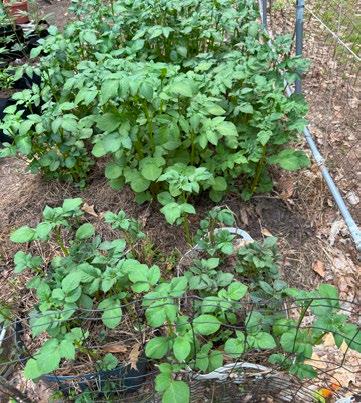
it with decaying hay, followed by another thin layer of soil and potatoes, repeating this process about five or six times in each basket. Again, soaking the shit out of it.
As of mid-to-late June, my potato stalks are growing rapidly, and the laundry baskets are bursting from the top and out the sides, with green-purple stalks likely from the pink and purple fingerling varieties. In the garden bed are red potatoes and a few Yukon Golds, which I read aren’t ideal due to deeper soil requirements.
In any case, they all came from our local CSA grower, so I’ve nicknamed the whole crop “Kyle’s Potatoes.” I’m going to reverse-engineer my potato experiment and dog-ear the most successful varieties at the end of the season.
Throwdown, mulch well, water deeply, and

soak the hell out of it and walk away, to put it plainly.



“Don’t overthink it; seed potatoes want to grow!”
sunchokes are a lovely addition to the edible home garden and make an excellent, elevated starchy food full of gut-bug-feeding inulin prebiotic fibre
We’re still a few months out from harvest, but I’m pleasantly surprised and excited by this gardening hack!
One thing to keep in mind with the Ruth Stout Method is sunlight requirements. Potatoes prefer at least six hours of full sun per day. Exposure will boost your yield! If you’re growing in containers, try rotating them if the sun exposure is inconsistent.
We had a cool, rainy spring in eastern Canada, so I was concerned that consistently wet conditions would lead to mould or rot beneath the hay. Good airflow helps, so try not to compact your mulch.
I also set up a basic sprinkler timer; no explanation is needed! However, overall, I’ve found it’s better to soak deeply once a week or so, weather permitting, rather than doing frequent light watering.
Note: I removed the vapour barrier this year for an even more hands-off approach by allowing rain to reach my crops.
Finally, consider nearby companion plants, such as calendula, marigolds, and nasturtiums, to ward off pests.
We also bought a bag of Kyle’s Jerusalem artichokes, also known as sunchokes, and promptly forgot about them. They, too, began to sprout!
There’s a garden bed outside the house where hostas and daylilies grow every year. I dug some holes and chucked in my sunchokes. They are now growing tall green stalks!
From the daisy and sunflower family (Asteraceae), sunchokes are a lovely addition to the edible home garden and make an excellent, elevated starchy food full of gut-bug-feeding inulin prebiotic fibre.

So far, the artichokes also seem forgiving, but they may not be quite as accessible as the chaos potatoes. No fancy growing media or nutrient inputs, just fallow soil to throw your potatoes on and fresh or funky straw or hay to cover them with. If you’ve got chickens, ducks or rabbits, you can reuse the nutrient-rich livestock bedding as mulch.
My theory is that the Ruth Stout Method works on any garden bed, regardless of its condition. Deep mulch potatoes can even be “planted” on a balcony or back deck in dollar store laundry baskets with a bit of dirt scraped off the side of the road.
Don’t overthink it; seed potatoes want to grow! Offer them a lot of mulch, a little neglect and some space to stretch their roots. Place ‘em in the sun; who says frugality can’t be fun? 3
BIO Haley Nagasaki is a legacy journalist and former B2B magazine editor in the Canadian cannabis sector. Now a strategist for Garden Culture Magazine, she drives content and business development, advocating for small-scale organic farming and global community-building initiatives. Connect with her on Instagram @haleynagasaki




Approved for Organic Farming by Control Union
Nutrients direct available for plant
Rich in micronutrients
Easily degradable in nature
Supports a circular economy


VGN, where sustainability meets innovation. These veganic fertilisers are the result of transforming plant waste into solutions for your plants. All VGN products are certified for organic farming by the Control Union. With VGN fertilisers you nourish your plants while supporting beneficial micro-organisms. A healthy soil life is the foundation for healthy plants!




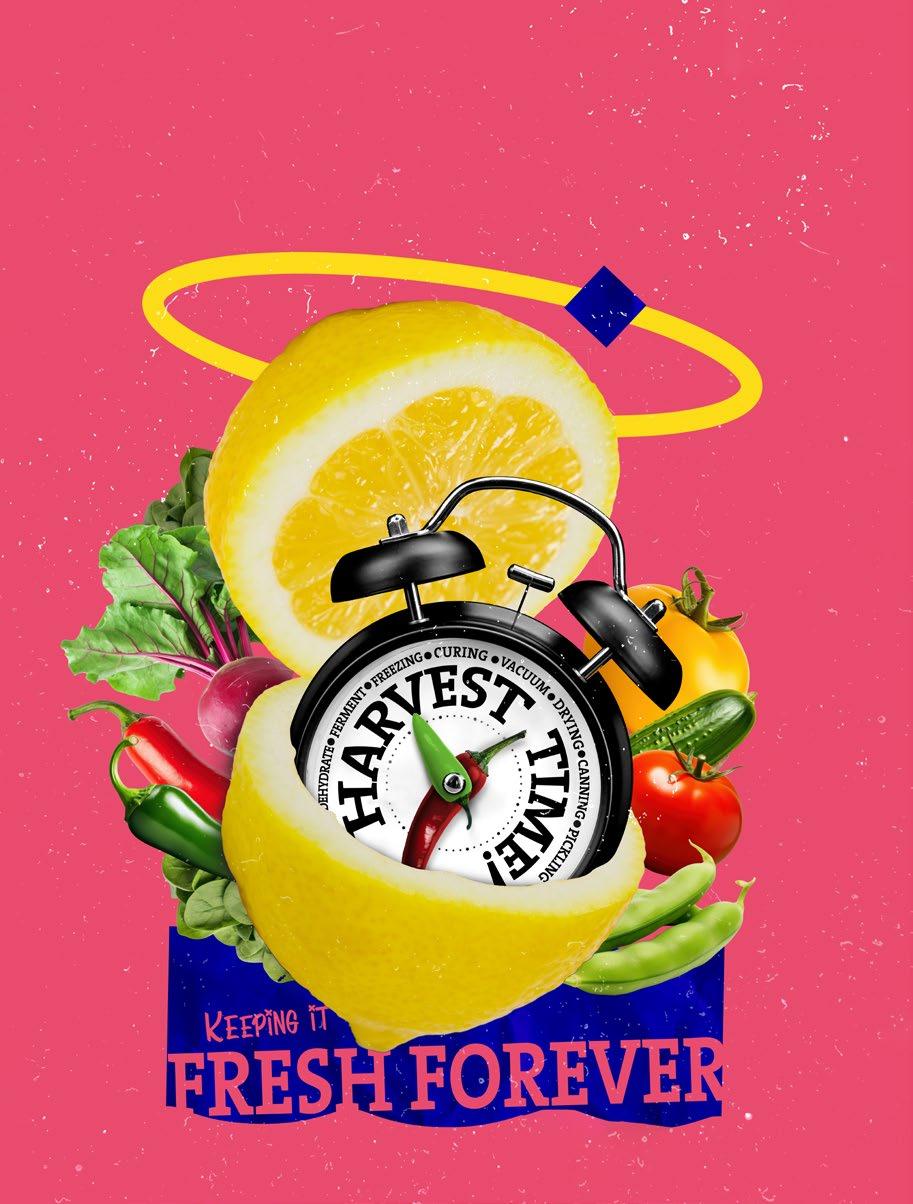


Your garden’s herbs—think rosemary, thyme, lavender, or others—are flavour vaults, their vibrant aromas and vivid colours locked in by nature’s design. In biology, nature’s design refers to the universal principle that structure equals function. Just as a house needs a solid foundation, a plant’s cells and compounds determine its resilience and quality. From sturdy cell walls to delicate terpenes, these structures define your harvest’s potency and shelf life. This
article dives into the science of preserving dried herbs, offering cultivators and home gardeners proven strategies to keep their plants fresh and potent.
Yo, herb lovers, get ready to geek out and keep your garden’s goodies bursting with flavour!
Preserving herbs is a high-stakes race against degradation—the natural breakdown of key compounds after harvest. Whether you’re drying basil for culinary excellence or chamomile for soothing teas, one wrong move in curing can turn your prize harvest into flavourless rubble. But don’t sweat it! By mastering a few environmental controls, you can lock in freshness and keep your herbs poppin’.
Ready, set, preserve! Let’s explore science and practical steps to make it happen.
The quality of dried herbs hinges on five critical structures, each vulnerable to post-harvest mishaps:
• Cell Walls: Composed of pectin and cellulose, these structures provide the plant’s framework. Poor drying weakens them, crumbling quality.
• Trichomes: Tiny resin glands, like flavoured capsules, store aromatic terpenes (e.g., limonene). Damage them, and potency fades.
• Active Compounds: Some herbs contain potent molecules (like THC or CBD) that degrade into less effective forms over time.
• Terpenes: These scent powerhouses deliver piney or citrusy notes but evaporate or oxidise easily, dulling flavour and aroma.
• Flavonoids: Responsible for colour and health benefits (e.g., anti-inflammatory effects), they fade easily under suboptimal environmental conditions.
Yo, herb lovers, get ready to geek out and keep your garden’s goodies bursting with flavour!
Degradation is the ultimate buzzkill, stemming from environmental triggers—light, heat, oxygen, humidity, time, and contaminants— that mess with your herbs’ quality chemistry.
Here’s the science behind each:
Sunlight or ultraviolet (UV) light acts like a flavour thief, washing out your herbs’ vibrant colours and aromas. It triggers a process called photooxidation, generating free radicals (unstable molecules) that break down terpenes, flavonoids, and cell walls.
Science Bite: A 1976 study found active compounds degrading 10–20% in 4 weeks under UV light, with faster losses in sunlight (Turner et al., Journal of Pharmaceutical Sciences). A 2018 study showed terpene β -myrcene turning into less aromatic forms (Sommano et al., Molecules).
Heat speeds up reactions, which can rob your herbs of their quality by breaking down key compounds. Above 70°F (21°C), terpenes evaporate like water in a hot pan, active compounds weaken, and flavonoids lose their health benefits.
Science Bite: A 2020 study reported 30–50% terpene loss in herbs stored at 86°F for 2 weeks (Shapira et al., Cannabis and Cannabinoid Research).
Air exposure dulls the quality of your herbs. It transforms terpenes and active compounds into less potent versions, muting aromas and fading colours.
Science Bite: A 1995 study noted 5–10% monthly loss of key compounds in poorly sealed herbs at room temperature (Mechoulam et al., Progress in the Chemistry of Organic Natural Products).

Just as a house needs a solid foundation, a plant’s cells and compounds determine its resilience and quality
Humidity is tricky: too much or too little, and your herbs suffer.
Excess moisture invites mould and microbes, which chew through cell walls like termites and leave harmful toxins.
Science Bite: A 2017 study found mould (e.g., Aspergillus) in herbs at 65% RH within 10 days, while 55–62% RH prevented growth (Thompson et al., Journal of Mycology).
Too Dry (<55% RH): Low humidity makes trichomes brittle, letting terpenes escape like air from a popped balloon.
Science Bite: A 2021 study recorded 20% terpene loss in herbs dried below 50% RH (Jin et al., Planta Medica).
Even with perfect care, time slowly chips away at your herbs’ freshness. Terpenes and active compounds naturally break down, losing 20–50% of their punch after 12 months.
Science Bite: A 2007 study estimated an 18–24-month half-life for key compounds in optimal storage (60°F, 55% RH, dark) (Hazekamp et al., Journal of Cannabis Therapeutics).
Dirty tools or residual chemicals are unwanted guests, allowing microbes (e.g., E. coli, Aspergillus) to spoil your harvest’s quality by breaking down plant-quality structures via enzymes. Pesticides or heavy metals can react to break down terpenes, spoiling quality.
Science Bite: A 2019 study detected mould in 13% of mishandled herbs, with toxins in 5% (McKernan et al., FEMS Microbiology Letters). A 2020 study found pesticides in 10% of dried herbs, accelerating terpene loss (Taylor et al., Environ mental Science & Technology).
Grower’s Tale: During fade to brown timber. Dumb rookie move…. I switched to UVproof jars on the next batch,
If you want your herbs’ potency, flavour, and quality to be on point, the journey begins long before harvest. Optimising preservation starts in the garden, with nutrient-rich plants equipped to fortify plants against degradation, ensuring robust terpenes and structural integrity. Elements like calcium, silicon, and magnesium function as natural armour, protecting the quality post-harvest. Experiment with these nutrient tips in your next grow!
While curing locks in quality after harvest, building resilient plants starts in the garden.
• Calcium (Ca): Strengthens cell walls, reducing mould risk by 15% (White et al., 2000, Plant Physiology; Jones et al., 2023, Agronomy Journal)
• Silicon (Si): Reinforces trichomes, locking in terpenes and boosting aroma retention (Currie & Perry, 2007, Annals of Botany; Smith et al., 2024, Plant Science)
• Magnesium (Mg): Boosts photosynthesis, fueling terpene production (Brown et al., 2023, Journal of Plant Nutrition).
• Boron (B) and Zinc (Zn): Supports plant physiology and cell wall stability (Green et al., 2024, Horticulture Research).
Nutrient Application Examples
Apply calcium-rich inputs and functionally targeted microbial biostimulants to enhance nutrient uptake, fortifying plant cell walls against mould, and preserving aroma and punchy flavours. Use soluble silicon supplements to strengthen trichomes and retain signature floral aroma during curing, ensuring top-quality. Integrate magnesium sulfate for robust terpenes.
With strong plants ready for harvest, the next step is to master moisture management to preserve aromas and compounds.



Effective drying and curing depend on three metrics: moisture con tent, water activity, and relative humidity. These distinct yet interre lated concepts significantly impact product quality and shelf life. quickly define these terms and how to measure each and highlight their roles in drying and curing:

• Moisture Content: Total water in herbs (target 10–12%). Use a moisture meter.
• Water Activity: Free water available for microbes (keep at 0.6–0.65). Measure with a water activity meter.
• Relative Humidity (RH): Air moisture (maintain 58–62% in curing). Track with a hygrometer.
Key differences:
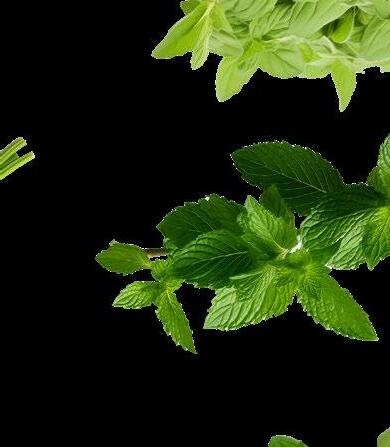
Stabilises water activity 58–62% Aspect
Relative Humidity (RH)
Air’s water vapour (% max)
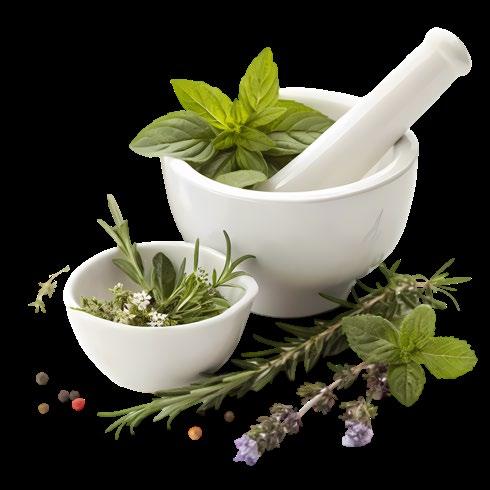
Controls drying rate
Practical Preservation Techniques
Follow these science-backed tips to preserve your harvest:
Practice
Storage

Humidity Temperature
Curing
Duration
Handling
Recommended
Use UV-proof, airtight jars
Maintain 55–62% RH with humidity packs
Store at 60–66°F (15-18 °C)
Cure for 2–4 weeks
Use clean tools, minimise contact
Avoid
Use clear plastic or bags
Allow >62% or <55% RH
Exceed 70°F (21 °C)
Rush or skip curing
Handle often or with dirty tools
Additional Strategies:
• Long-Term Storage: Vacuum-seal jars or use nitrogen flushing; store at 41°F (5°C).
• Equipment: Invest in humidity packs, hygrometers, and amber glass jars.
• Monitoring: Check for mould (fuzzy spots) or off-odours every 1–2 months. Discard contaminated herbs safely.
• Batch Management: Store small batches separately to reduce air exposure.
Conclusion
Preserving the quality of your herbs is a science-driven art. By understanding how light, heat, oxygen, humidity, and contaminants degrade key structures, cultivators and home gardeners can take control. Feed your plants essential nutrients, cure with precision, and store strategically to ensure your harvest—whether thyme, sage, or medicinal herbs—stays vibrant, aromatic, and potent for the long haul. Try these curing tips on your next harvest and share your results with Garden Culture! 3
BIO Colin Bell is VP of US Business Development at MIIM Horticulture. He has worked as a PhD Research Scientist in Federal and Academic institutions for years. He builds businesses, develops products, and grows brands for indoor cultivation. Reach out: colin@miimhort.com
As I write this, my plants are only ankle-high and still have their zest for life well intact. They are months away from any type of harvest, and that’s if they make it to that point. I whispered that last part because I don’t want my leafy friends to hear any negativity so early on in life. Let me turn up the classical music for them and give them a good misting while I get into what makes me a happy harvester and what causes absolute heartbreak in the garden and grow tents over in my neck of the woods. Buckle up; it’s the proverbial “angry old man” checking in.
Oh-Oh
Let’s treat this article like a rollercoaster and work our way up before we come crashing down to reality. Sometimes, it just comes easy; you don’t even remember planting zucchini and here before you is a monster of a specimen, spewing out more fruit than anyone could ever eat, leaving you with extras to bless neighbours for miles around. The garden gods blew tiny kisses all summer long, blessing both the plant and the gardener. Life is good, sometimes. These are mostly unicorn events, so enjoy them while you have them, like girlfriends and clean underwear.
I whispered that last part because I don’t want my leafy friends to hear any negativity so early on in life
Another happy little miracle I enjoy is when I fight off all the challenges a growing season can throw at me while still managing a reasonable crop. With seasons and storms getting more challenging, I find myself playing doctor and not the fun kind. Whether it’s managing blight or infestation, it’s a morale boost to save a plant from certain death. Last year the storms were so violent I lost quite a few large trees, but the goddamn tomatoes still made it because Papa is a helicopter parent. If anyone
has a 20-inch chainsaw to lend me, I have about three years’ worth of firewood to process. An impromptu “harvest”, if you will.
The harvest itself is the apex of gardening happiness. Deciding when everything is ready to pluck and filling up stainless steel bowls with whatever the hell you have been blessed with. I’ll find myself looking over at the pile of cayenne peppers taller than my French Bulldog and exclaim, “Wow, all mine and all for FREE”. It’s similar to Easter as a child when you come home from family events with your haul of chocolate bunnies, with enough sugar in your system to plough a field. Something about a decent harvest that feels like a security blanket for me. One that smells like a golden retriever but a security blanket nonetheless. He’s been farting a lot lately, making bedtime challenging. Can I interest anyone in a rescue dog? I kid.
If you have been gardening for any length of time, you know that its challenges are equal to its benefits. Nothing knocks the emotional piss out of me harder than when you harvest a perfect-looking crop, whether it be green beans or herbs and let it go to shit during drying and curing. A little ambient microbial and a few percentage points of humidity in the wrong direction, and you won’t be eating anything at all. I had a recordbreaking plant both in size and yield, but after two days in the wrong part of the house, it turned into a mouldy mess that Alexander Flemming would be proud of. I’ll save you the Google search; he discovered penicillin. If you want to feel absolute heartbreak, the kind that teenagers lament over, then toss a tomato plant you have been coddling for six months in the trash.

Last year the storms were so violent I lost quite a few large trees, but the goddamn tomatoes still made it because Papa is a helicopter parent. If anyone has a 20-inch chainsaw to lend me, I have about three years’ worth of firewood to process.



Any bountiful harvest comes hand in hand with some sort of canning or preservation. Any gardener worth his salt has a basement full of Mason jars ready to be filled.
Any bountiful harvest comes hand in hand with some sort of canning or preservation. Any gardener worth his salt has a basement full of Mason jars ready to be filled. A concept that has been around for ages, removing the oxygen while sanitising the vessel preserves your bounty and means you don’t starve come winter. There is one thing that rings in my head when doing any canning, and that is to make sure that everything is cleaner than a baby’s police record before starting because a case of Botulism, AKA Clostridium botulinum , will send someone to the funeral parlour. And all I wanted to do was enjoy some eggplant! Remember to double-boil all the jars, buy new lids, wash your hands, and salt generously. If you see signs like a bulging or leaking container, unusual odours, or spurting liquid or foam when opened, toss that. Wait… squirting liquid or foam when opened? Me too, Botulism! Me too! Good lord, what’s wrong with me?
Harvesting used to be something my grandmother and I would do together; it’s a good bonding experience and gets the love swelling to agreeable levels. It turns a chore into an event when doing it with people whose company you enjoy. It can bring people together. If you are a loner like myself and you don’t want anyone’s filthy mits touching your Jalapeños, may I suggest turning it into a game? Time how long it takes you to carefully harvest and then try and beat your personal best. I have the fastest scissors in Eastern Canada.
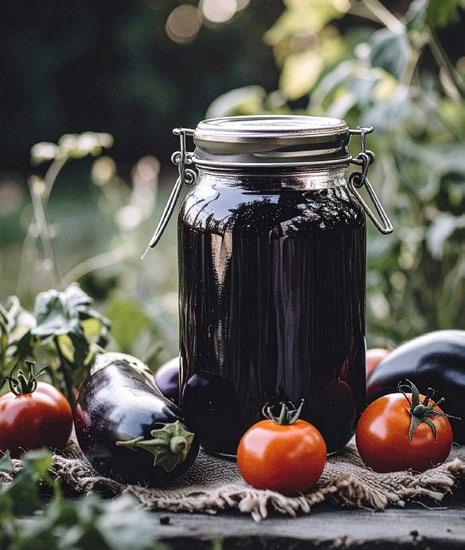
This is something you should do in the garden: stay positive, keep planting and harvesting, and enjoy the small victories that nature provides.
With all four of my grow tents empty and a minimal selection of plants in the ground this year, my focus is more on landscaping and the environment than harvesting anything exceptional. Then again, with the looming cost of replacing my septic tank, growing and harvesting my own food is becoming increasingly necessary. My shitter just crapped out; it would take roughly 200 000 tomatoes to offset the cost, but I am trying to remain positive. This is something you should do in the garden: stay positive, keep planting and harvesting, and enjoy the small victories that nature provides. Have a great season, and may your harvest be bountiful and pest-free, my little bean sprouts. If you come over, just don’t flush. If it’s yellow, let it mellow, as we say in the country. 3
BIO Regi Oneton is a multi-disciplinary artist and daytime executive. He’s been a member of Socan since his first album release at the age of 20, and is a self-taught audio engineer and self-proclaimed studio rat. Regi is a late-blooming street artist and painter whose works can be found hanging in the offices of Burton and Vans Canada. Long-time contributor to the Under Pressure Graffiti Festival and lover of the Arts. As the years plow forward, he has added botanical enthusiast/plant father to his litany of passions. His interests include writing and spending too much time looking at his phone.




Using The Paper Bag Method to Preserve Flavour and Effect
For herbs grown for their essential oils, pre-dawn harvesting is ideal. It’s at this time during their sleep-wake cycle that desirable phytochemicals are most abundant in the trichomes. Unfortunately, dewy conditions in the late summer and fall can create moisture issues (namely mould) in the plants if they are not able to dry out. To mitigate this, I use a harvest strategy that combines a traditional approach to herb drying in paper bags or baskets with a typical “trim and hang in the dark” method. For optimal results, a two-day window with no rain in the forecast is ideal for using this tactic.
Assess plants in full sunlight about 20 hours before you plan to harvest. Ruthlessly (with very clean and sharp tools) remove plant matter showing any signs of damage. All of this goes into a deep bucket with a lid or bag held closed with a clip as you move around the garden. You can deal with this material (through whatever destructive means you choose) later once all the good stuff has been safely taken in and processed.
After cleaning yourself and your tools, return to the plants and defoliate the majority of the remaining fan leaves. You have the choice to keep the best ones for eating (adding a little more green goodness into your diet) or make them into food for garden microbes and a future generation of plants. It’s a perfect time to brew up some FPJ (fermented plant juice) from these leaves, especially if you’re running an indoor cycle before next spring and could benefit from practically free, bespoke nutrients.
If you have no direct use for the leaves elsewhere, one option is to defoliate and drop them directly onto the garden soil. It’s the same as any other natural autumnal process, as they form a mulch layer that can be beneficial for soil renewal and the health of microbial populations. Should that be too untidy for your situation, plants that are small enough may be carried to a spot where the leaves will be welcome when merely dropped. Alternatively, lay out a sheet or use a cardboard box or tote to collect them and then carry them to a compost bin or pile.
Bearing the next day’s expected weather report in mind, seek a place where air circulates well, out of the direct sun. This will be your staging area for post-chop, pre-trimmed plants. String up a temporary ‘laundry line’ that can bear the wet weight of your harvest.
Using a wheelbarrow or rolling cart saves a lot of work and effort while bringing in the harvest. You can choose to travel a row or among beds and pick or cut everything into this bin as though you were moving down a supermarket aisle. Employing a reusable tarp or old sheet as a liner can help keep the harvest clean from dirt and fungal spores.
Large paper garden waste bags are handy for keeping individual plants separated. If a plant will fit entirely inside one, put it over the plant and gather the opening of the bag around its base without letting the paper touch the dirt. Holding firm with one hand, use the other to chop the stem. Mark the bag with the name of the plant.
For optimal results, a two-day window with no rain in the forecast

Tip:Tie or tape the lid of a marker to a thick lanyard or sturdy string to hang from a belt or around your neck, allowing you to use it one-handed. (Safety first: if you work around anything with a motor, like if you’re driving out to a guerrilla grow spot on an ATV or tractor, don’t put it around your neck.)
Bigger plants can be collected the same way, by sectioning parts or individual branches into a bag and then cutting them from the central stalk.
Medium-sized paper grocery bags, or even small “packed lunch”-type bags, are good for separating any questionable or damage-adjacent flowers from the most pristine branches. A simple rating system (e.g. Grade A, B, C) in combination with the plant’s name keeps things nicely organised. It can also be helpful to use other symbols, such as stars or exclamation points, to mark the bags containing top branches if large plants are brought down piece by piece.
Hang your bags up on the line you strung the day before, leaving a gap open at the top to allow moisture to escape. Now that you have your plants suspended upside-down in paper bags, the UV rays from the sun are blocked, preventing the degradation of the essential oils. Volatile oils are better retained than they would otherwise be as dawn turns to day.


You won’t keep the plants here for long, but using this process affords time for all of the plants to start drying while you work your way through breaking them down individually. Furthermore, the marked bags keep plants organised and inventoried while they pass to the next steps of trimming and hanging.
Paper bags also provide a privacy bonus, keeping curious eyes off your plants while they hang somewhat innocuously in an open garage or side yard.
Carry on with your harvest process. If you’re running out of time to get everything trimmed to your liking and hung up in the dark before the day is over, take the bags inside to prevent the dew from condensing on them the following morning. Spread them out and dehumidify the environment as much as you can.
There’s a risk of mould from trapped moisture in the bags, so you may need to sacrifice some terpene preservation and cut slits or holes in the paper, possibly even cutting off the square bottom entirely, to allow more water to escape into the air.
Should you be lucky enough not to have to worry about high humidity, to the point that your herbs could easily become too dry too quickly, modifying the method by keeping your plants strung up in bags might just be your ticket to conserving moisture and volatile compounds.
Do:
• Overestimate how many bags you’ll need, and have extras
• Be consistent with labelling and grading standards
• Compost or use the bags as a mulch layer on garden beds being shut down for winter
• Use the natural ‘V’ of a cut branch or a clip to keep the tops of flowers from being crushed at the bottoms of the bags
Don’t:
• Pack bags more than about 50% full
• Let paper bags get wet or dirty before or while the plants are in them
• Forget about any plants still in bags the next day because they are “out of sight, out of mind”
BIO
While the paper bag method isn’t for everyone, it’s a technique that allows outdoor growers to harvest in sync with the plant’s circadian rhythm and slow down degradation

While the paper bag method isn’t for everyone, it’s a technique that allows outdoor growers to harvest in sync with the plant’s circadian rhythm and slow down degradation. I’ve found the method takes some stress out of timing the chop perfectly and lets me see fairly quickly if I’ve estimated and prepared enough indoor drying space. That ultimately informs decisions about what goes where, how much is going to be frozen instead of dried, and what takes priority when the clock (or labour energy) is running down on a day’s worth of trimming.
• Large ‘lawn waste’ paper bags or other paper bags appropriately sized to fit your plants
• Big, bold marker on a string
• Strong sheers
• Rope, laundry line, or other sturdy drying rack 3
a writer, (re)searcher, and lifelong learner with their hands in the dirt and imagination traversing the universe. Seeking always to deepen and integrate their connection with the living planet and its diverse inhabitants,
finds joy by infusing their practical and playful approach to cultivation with a healthy dose of science. They grow food and medicine for their family and community on the northeast coast of Turtle Island. Instagram: @xavi_kief
If you time planting your chillies out just right, when nighttime temperatures are reliably warm (preferably above 18°C / 64°F), you can grow true monsters. Many novice growers plant out too early, leading to premature flowering and fruiting—and, accordingly, paltry harvests.
If you follow my advice, start them early indoors and plant them out when summer has properly kicked in, you’ll have another problem to deal with. By late August and early September, those six small plants you hatched indoors under grow lights back in February will be dripping with hundreds of garish red pods. The Trinidad Scorpions are practically daring you to touch them. The Lemon Drops are almost embarrassing you with their overachievement. And somewhere, buried under the Cayenne bush riot, even the weeds are crying for help.
So, what can you do with shopping bags full of freshly harvested chillies? Eat them all in one heroic sitting? No, you preserve them. Because few things say “grown-up gardener”, like casually producing your own smoky chipotle paste in the dead of winter while wearing an apron that says “Chilli Daddy.”
Here’s your spicy survival guide. I’ve listed eight different preservation methods below, but I describe the easiest and most popular in the most detail—these first three will handle 90% of your chilli surplus with minimal fuss and maximum satisfaction.
First, a polite word of warning. Drying chillies actually concentrates the capsaicin, so be prepared for the result to be significantly hotter than when fresh. This method works well in various climates with proper technique and patience.
Air drying works beautifully for thin-skinned varieties like cayenne, Thai, or Ají Amarillo. The traditional method is simple: thread them onto strong cotton string or fishing line, leaving gaps between pods for airflow, then hang them somewhere with good ventilation and low humidity. In 2-6 weeks, depending on conditions, you’ll have your very own garland of concentrated fire.
Here’s a useful pointer: for very small varieties like Bird’s Eye chillies, don’t string them individually. (You’ll age too much in the process.) Cut entire branches with clusters and hang those instead. They dry more slowly, which preserves more flavour compounds.
Drying chillies actually concentrates the capsaicin, so be prepared for the result to be significantly hotter than when fresh
The key rule for air drying: thick, fleshy varieties like jalapeños or habaneros can be challenging unless you slice them first or have exceptionally dry conditions. Otherwise, you risk mildew and disappointment.
Top Tip: Never hang them over your cooker! Grease and humidity will ruin them. Also, nothing ruins dinner like a chilli dripping into your stir-fry.
For dehydrators, set to 55°C (52°C for delicate varieties) to preserve nutrients and prevent case hardening. Slice thick chillies and expect 8-12 hours. Oven drying works too—door ajar, lowest temperature setting (ideally under 60°C), check regularly to prevent overheating.



Everest Fernandez explains how to solve this wonderful problem with the easiest preservation techniques.
My Favourite “Lazy Genius” Solution
Freezing preserves heat and flavour excellently for 6-12 months in home freezers. I’ve used year-old frozen chillies that were still wonderfully potent. The texture goes soft—useless for garnishing but perfect for cooking.

Freeze whole chillies on trays first, then bag them. This stops them from clumping together so you can grab exactly what you need.
Purée Cubes: Portion Control
Blend chillies with a splash of water, freeze them in ice cube trays, and then bag the cubes. One cube typically equals 1-2 fresh chillies. Perfect for precise dosing in recipes.


Once you’ve mastered these three foundational techniques, you can explore more complex preservation methods that reward patience with exceptional results




Pickling transforms chillies—the acetic acid preserves them while mellowing heat and adding a sharp tang. My favourite is Giant Jalapeño sliced into rings for wraps and pizza.
For relatively quick gratification, try quick pickling. (It feels very ‘cheffy’!) Slice your chillies, toss with salt and sugar, add coriander seeds and black peppercorns, and cover with quality vinegar. Store in the fridge and wait at least 2-3 hours, though they’re best after 24 hours as flavours properly meld. They’ll keep for several weeks refrigerated.
For shelf-stable pickles that last a year or more, sterilise your jars in boiling water, prepare a proper brine (made from equal parts vinegar and water, with added salt and sugar), and process them in a boiling water bath for 10 minutes. The extra effort pays dividends when you’re pulling perfectly preserved chillies from your pantry in February, remembering the abundance of summer.
Advanced Arsenal: Quick-Fire Methods
Once you’ve mastered these three foundational techniques, you can explore more complex preservation methods that reward patience with exceptional results.
Fermenting uses beneficial bacteria to transform chillies over 2-4 weeks, creating complex, funky flavours. Chop the chillies, submerge them in a 2-3% salt brine, weigh them down, and wait. Great for preserving and developing the character of Scotch Bonnets.
Chilli Oil & Confit creates liquid gold. But don’t mess about with safety—botulism is real with chillies in oil. Even with dried chillies, add acid (vinegar or citric acid) or keep them refrigerated for safety. Fresh chillies should always be acidified or kept frozen/ refrigerated. Bay leaves and Sichuan pepper are welcome additions.
Jam, Paste & Sauces turn surplus into condiments. One year, I made habanero-mango sauce that looked like baby food and punched like Tyson. People still talk about it. Some in therapy.
Salt Preservation is criminally underrated. Chop chillies, mix with 20-25% salt by weight (this percentage is crucial for safety), pack into sterilised jars, and ignore for a week. The result looks terrible but tastes incredible—a spicy sludge that lasts months and transforms anything it touches.
Candying works with mild varieties—simmer in a sugar syrup until they are sticky and translucent. Using Ghost Peppers is how family feuds begin.



Preserving chillies is an act of faith, a celebration of excess, and a sneaky way to make winter bearable

Preserving chillies is an act of faith, a celebration of excess, and a sneaky way to make winter bearable. Next time your chilli plants go nuclear, don’t panic. Pick your method. Channel your inner spice whisperer. Make things in jars and give them names like “Molten Midnight” or “The Regret.”
And if your neighbours start being overly friendly come September, it’s because they remember last year’s gift jar of Inferno Jam. They’re back for more—or possibly vengeance.
Now, if you’ll excuse me, I’ve got a ferment bubbling ominously and a label to redesign. Currently thinking: “Caution—May Ruin Lunch.”
Stay spicy, you glorious maniac. 3
Everest Fernandez is a well-respected industry educator, veteran hydroponic grower and grow light enthusiast, based in France. He works primarily as a marketing and cultivation consultant and was the founding editor of Urban Garden Magazine in the UK, US and Canada. He also writes and researches for the popular hobby horticulturalist YouTube channel, Just4Growers.


Turning food scraps into meals, snacks, and homemade cleaning products is one of the easiest ways we can save money and reduce waste at home

We live in an era where almost anything the heart desires is at our fingertips or easily accessible with the click of a few buttons. Cars drive themselves, and people have conversations with AI bots. However, we’re all feeling the pinch in today’s world, and every dollar counts. Reducing our waste and consumption is essential to the health of the planet. We can find great optimism during challenging times by exploring the past and learning how our ancestors weathered the storms of famines, the Great Depression, and World Wars. Some incredible philosophies emerged throughout these dark moments in history to bring people hope and help them make ends meet. The ‘waste not, want not’ mentality is a prime example: a budget-friendly, sustainable lifestyle that celebrates simplicity and resilience. Turning food scraps into meals, snacks, and homemade cleaning products is one of the easiest ways we can save money and reduce waste at home.
Thrift and practicality are our jam; speaking of jam, you can make a tasty spread out of just about any leftover fruit scraps
Take a look at anything bound for the compost bin and think creatively. Can you make something out of nothing? Thrift and practicality are our jam; speaking of jam, you can make a tasty spread out of just about any leftover fruit scraps. In her book Preserving with a Purpose, canning guru Sarah Thrush offers a variety of delicious recipes that nourish both the body and the soul, like turning apple peels and cores into Apple Scrap Jelly. Are you looking for something to do with all of those leftover corncobs this time of year? After removing the kernels for canning, boil the cobs down for an hour and get going on some Honey Corncob Jelly. Don’t stop there; give the cobs a third use by cutting them into sections, drying them in a well-ventilated room, and using them as kindling for your winter fires! Thrush recommends transforming the husks into tamales and the silk into a corn silk tea.
Use vegetable peels, tops, and greens to make a homemade broth, and turn stale bread into croutons or bread crumbs. Clean eggshells make excellent garden fertiliser, seed starters, or homemade toothpaste! After peeling your bountiful harvest of tomatoes for a sauce, grab your dehydrator and make a flavourful Tomato Peel Powder (recipe follows).

The David Suzuki Foundation offers several suggestions for repurposing food scraps to create household cleaning and personal care items:
• Add lemon and orange peels to vinegar to make a DIY all-purpose cleaning spray.
• Simmer citrus peels in some hot water on the stove to freshen the air in the house.
• Use the inside of a banana peel to clean and polish houseplant leaves.
• Transform fruit and veggie scraps into wholesome pet treats.
• Coffee grounds make an excellent body scrub or face exfoliant. They’re also ideal for boosting soil health in the garden!
Compost whatever you can’t repurpose, and if you’re not ready to start on any of the above recipe ideas or projects, consider freezing the scraps until you have the time.




by Sarah Thrush (@peeliesnpetals)
Typically discarded as waste, tomato peels can now be easily dehydrated and turned into a vibrant, flavourful powder that can


Tomato Powder can be used in the following ways:

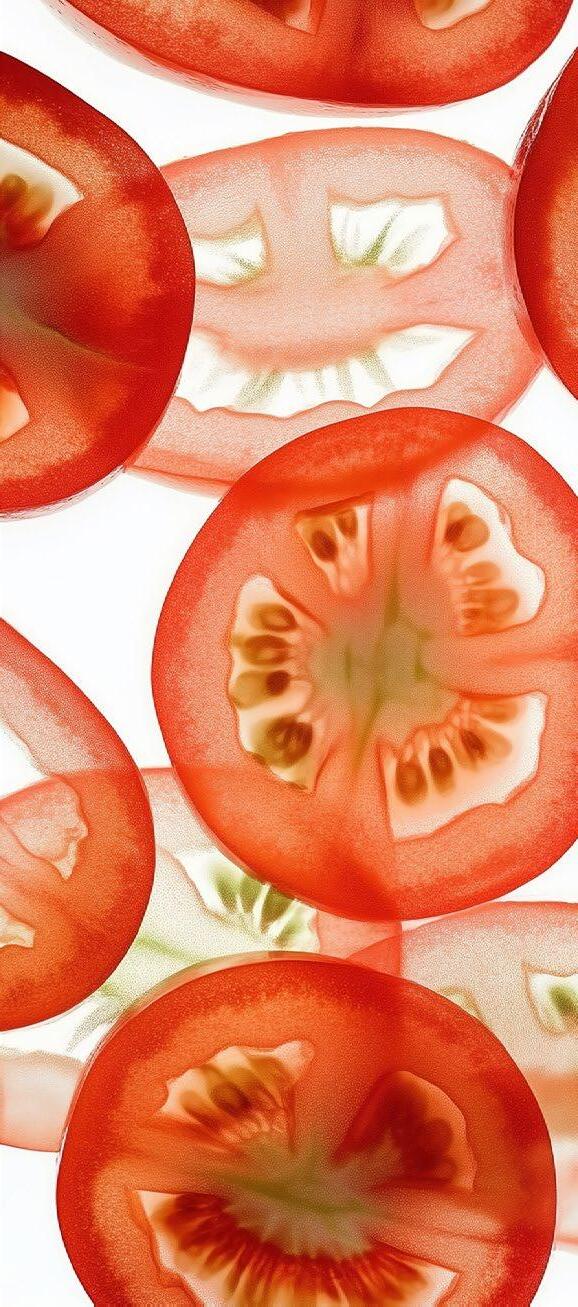
A seasoning for roasted vegetables, popcorn, or homemade potato chips.
A soup and sauce enhancer to boost the tomato flavour without adding liquid.
For pizza and pasta toppings.
As a Bloody Mary mix with an extra tomato profile.
In marinades for meats and tofu.
In dips and dressings for a subtle tomato twist.
For a flavour boost in rice and grain dishes 3


BY SARAH THRUSH


By Sarah Thrush
Icall this recipe “100-Year Garlic” because it can last hundreds of years. The tradition of fermenting garlic in honey dates back thousands of years, as ancient Egyptian tombs have revealed—a captivating narrative that transcends borders and cultures. But you don’t have to wait a century to enjoy this time-honored treat.
Makes approximately 1 pint (473 ml)
• 20 to 30 peeled whole garlic cloves, approximately 1 cup (136 g)
• 1 cup (340 g) raw honey
1. Place the peeled whole garlic cloves in a pint-sized, widemouth Mason jar, ensuring they are evenly distributed. To quick-peel garlic, place cloves in a microwave dish and microwave for 10 to 12 seconds. The garlic peels will slip right off.
2. Pour enough raw honey into the jar to completely cover the garlic cloves. Ideally you want the jar no more than twothirds full, allowing air space for the garlic to bubble (ferment) in the honey.
3. Place a canning lid and ring on the jar, leaving the ring loose. Place the jar on a countertop or shelf.
4. Every couple of days for 2 to 4 weeks, unscrew the ring and “burp” the garlic to release the gases in the jar from the fermentation process.
5. Tighten the ring securely, and flip the jar upsidedown to recoat the garlic cloves.
6. When turning the jar upright again, loosen the ring before returning it to the counter or shelf.
7. When the honey no longer contains gas bubbles (around 1 month), the garlic has finished fermenting and is ready to enjoy. The longer it sits on your shelves, the darker the garlic will become and the more infused the flavours.
8. For long-term storage, keep the jar in a cool, dry environment away from direct sunlight. Enjoy for the next hundred years!
• Bubbles in the honey. These are gases related to the fermentation process.
• Hissing or whooshing sounds when burping the jar every day.
• Honey becoming runny. Honey is hydrophilic and will draw the water from the garlic, thinning the honey.
• Garlic cloves with a bluish or greenish hue during fermentation. While this may look unusual, it’s not harmful and the honey garlic remains usable.
• It is crucial to use raw honey for this recipe, as it contains the necessary bacteria and wild yeast for fermentation. This recipe is unsafe to consume unless you use raw honey.
• Do not give any part of this recipe—honey or garlic—to infants or children under two years of age.

• Place a plate or napkin under the jar during fermentation. The mixture may bubble up as part of the process, causing some honey to drip out.
• To address concerns about botulism, use a pH test strip. Botulism spores cannot thrive in an environment with a pH below 4.6. Honey typically has a pH of around 3.9, though this can vary.
• Do not add more honey or garlic to the jar after fermentation. If you are running low, start a brand-new jar with new ingredients. Reusing honey can lower the pH to unsafe thresholds.
• Straight from the jar. A teaspoon of garlic honey with one fermented clove is a wonderful treat, and it also has good medicinal properties. Take at the first sign of a cold or as a routine immune booster for health maintenance.
• In cooking. Use in condiments, salad dressings, fruit and pizza drizzle, and marinades.

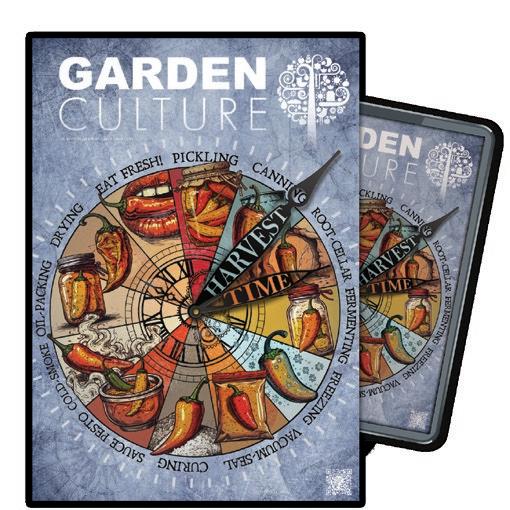




From ‘honesty boxes’ to ‘pay-what-you-can’ farm stands, a new era in community-first farming is emerging, making fresh, healthy food more accessible to everyone.

The farm stand at EarthDance Organic Farm School in Ferguson, Missouri, displays prices on each item it sells; however, since 2021, those prices have been mere suggestions: you pay only what you can afford [1]
“’Pay-what-you-can’ makes sense for us,” says Operations Manager Margaret Gerker. “We are trying to make our produce more accessible to our community. Our farm is situated in an area highly affected by food apartheid, so our neighbours benefit from having greater access to fresh fruits, vegetables, and eggs from our farm.”
According to statistics from the United States Department of Agriculture (USDA), food-insecure households, defined as those uncertain of or unable to acquire enough food to meet the needs of all their members, accounted for 13.5% (18 million) of the American population in 2023 [2]
The ‘pay-what-you-can’ system takes inspiration from the farm gate’ honesty box.’ Driving along country roads, it was common to find unmanned lean-tos or tables laden with fresh produce nestled by the farm gate. The autonomy of the ‘honesty box’ allowed customers to pay what they could afford for produce without fear of judgment and with dignity. The ‘honesty box’ can still be found at farm gates, although it’s not as prevalent as it once was. Now, the same idea of the community helping the community and providing fresh farm produce at a price that a person can afford is found at ‘pay-what-you-can’ farm stops and farm stands.
Approximately 24 miles north of San Diego, Coastal Roots Farms has been operating its pay-what-you-want farm stand since 2016 [4]

the farm views the investment in the ‘pay-what-you-can’ model as socially and ethically designed, not for profit but for community health, food equity, and resilience

EarthDance Organic Farm School is a 14-acre organic, urban farm. Programmes throughout the year focus on teaching people how to farm and garden, ranging from fermentation to pruning.



“One in four San Diegans is food insecure, “says Erin Taylor, the farm’s marketing manager. “While there are other excellent emergency food providers, few can offer produce as fresh, organic, and nutrient-dense as what we grow. The farm stand fills a unique and vital role in this ecosystem.”
At ‘pay-what-you-can’ farm stands or farm stops, shoppers are invited to pay 25 to 100% more or less than the suggested price displayed.
“Maybe two out of five customers take a discount. One out of ten customers donate. The rest typically pay retail value for their produce,” Gerker says.
Additional amounts vary from three extra dollars paid at the register to 100.
The same is true at Coastal Roots Farms, where it’s estimated that two-thirds of customers rely on the ‘pay-what-you-can’ option, while one-third either pay the suggested amount or contribute more.
Although the ‘pay-what-you-can’ model has been shown to boost customer satisfaction and attract price-sensitive shoppers, it also presents challenges.
“The ‘pay-what-you-can’ model is not designed for profit,” Taylor says.
The Farm Stand at Coastal Roots Farms operates at a financial loss—but it’s a planned and purposeful one, according to Taylor. Relying on generous philanthropic support, grants, and community donations to subsidise the cost of food and sustain the model, the farm views the investment in the ‘pay-what-you-can’ model as socially and ethically designed, not for profit but for community health, food equity, and resilience.
From an operational perspective, integrating a ‘pay-what-you-can’ system into a point-of-sale process can also be tricky, according to Taylor. Point-of-sale systems are typically designed to read pre-set barcodes that feed the price into a computerised system. However, when customers change the amounts they pay, this can challenge the system and the staff. At Coastal Roots, staff are trained to facilitate a private ‘pay-what-you-can’ process outside of the standard point-of-sale purchase.
According to Gerker, the farm stand at EarthDance is also likely losing money.
Coastal Roots Farm is a non-profit Jewish community farm practising regenerative agriculture on ancestral Kumeyaay land in Encinitas, California. Its mission is to cultivate healthy, connected communities. Among other things, the farm offers environmental education and hands-on learning.
“However, it is extremely profitable for the community,” she says while explaining that they encourage social connections through corporate pop-up markets that fundraise and help support the farm stand. “I imagine a for-profit farm may have a hard time pulling this model off.”
It’s no coincidence that both Gerker and Taylor point to the community benefits of the ‘pay-what-you-can’ model. The people who can afford to pay more compensate for those who need a discount. The reciprocal community approach is also part of a personal investment strategy for some.
“One customer I know gives more at the beginning of the year when she has more funds and then is more likely to take a discount later in the year when she needs to,” Gerker says.
The system creates a culture of mutual care and respect while fulfilling a community’s needs. While specific monthly averages can vary seasonally, Coastal Roots sees approximately 315 weekly transactions, which translates to about 1,000 people per week. During the first quarter of 2025, more than 12,000 people were served through the Farm Stand and broader distribution efforts.
Across North America, the ‘pay-what-you-can’ farm stand may have replaced the ‘honesty box’ by the farm gate, but the idea of community helping community has just taken on a new approach that’s growing. When EarthDance first opened its “pay-what-youcan” farm stand, it was challenging to find farms adopting similar models. Now, if you search the term online, there is a plethora of options across North America.
“It’s a reminder that food is about more than nourishment. It’s about belonging, dignity, and justice,” Taylor explains. 3
Footnotes
1. Earthdance Organic Teaching Farm | Ferguson, Missouri earthdancefarms.org
2. Food Security in the U.S. - Key Statistics & Graphics | Economic Research Service
3. Coastal Roots Farm coastalrootsfarm.org.
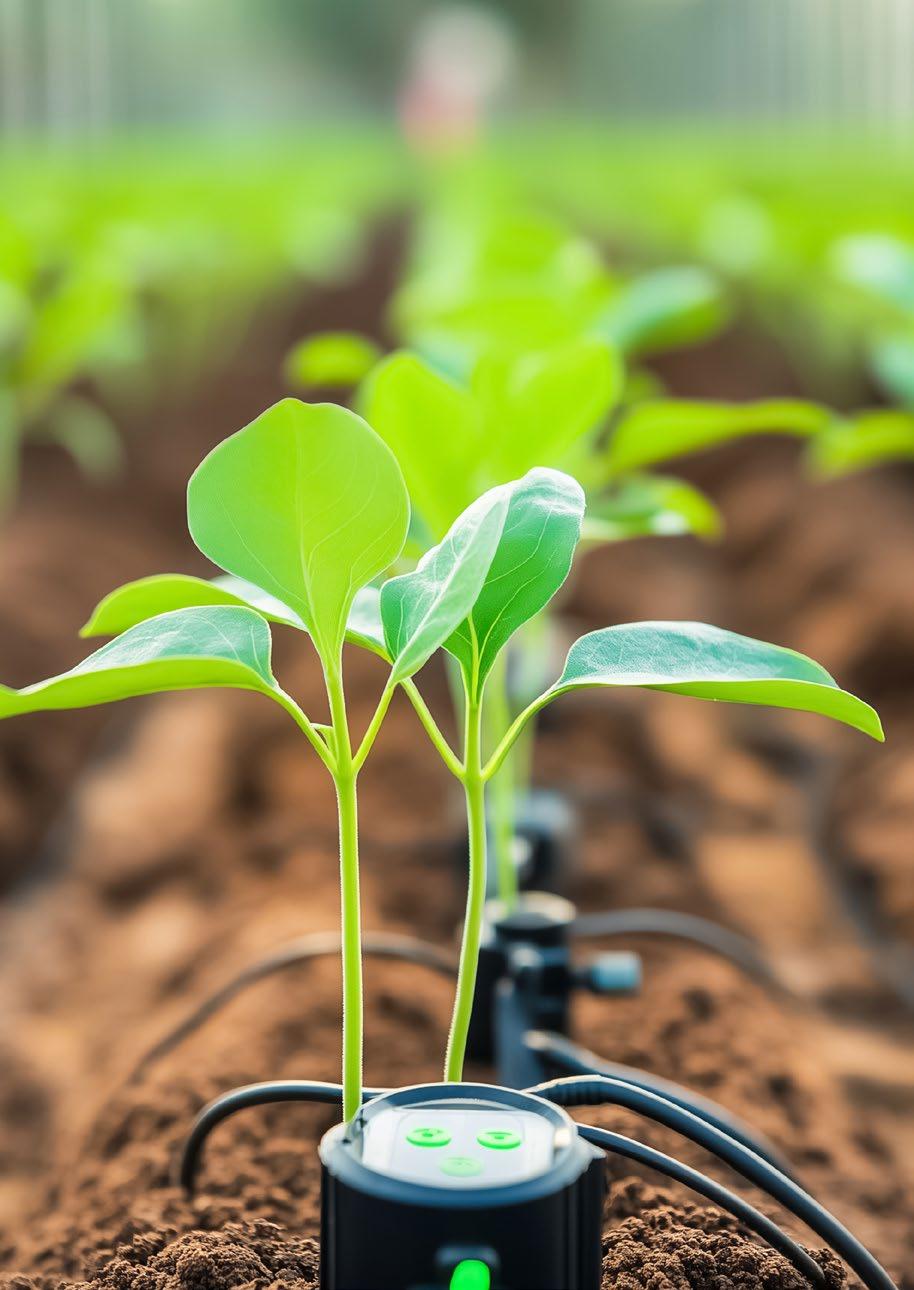
the difference between average and exceptional cultivation outcomes often comes down to one critical factor: the ability to direct plant growth through precision environmental control
In the rapidly evolving world of controlled environment agriculture, the difference between average and exceptional cultivation outcomes often comes down to one critical factor: the ability to direct plant growth through precision environmental control. This practice, known as crop steering, represents the cutting edge of modern cultivation science, where data-driven decisions replace guesswork and intuition.
Plants are more sophisticated than many growers realise. Every moment, they process environmental information through complex signalling pathways, constantly adjusting their growth patterns in response to the conditions they perceive. These responses are mediated by plant hormones that act as chemical messengers throughout the plant.
Consider the red-to-far-red ratio. Leaves don’t just detect whether lights are on or off; they evaluate the spectral composition to make critical decisions about germination timing, shade avoidance responses, and flowering initiation. When plants detect a high farred ratio, they interpret this as competition from neighbouring plants and respond by stretching toward the light source, a response that experienced growers can manipulate through spectrum control.
Most critically, simulated water stress promotes earlier flowering via a generative effect. This stress response system becomes a powerful tool when growers understand how to apply controlled stress at strategic growth phases.
Central to effective crop steering is understanding water potential: the dynamic underlying many of the tools a grower might use. This concept encompasses several components that growers must monitor and manipulate.
Osmotic potential reflects the concentration of solutes in your nutrient solution, measured as electrical conductivity (EC). When EC levels are high, plants must expend more energy to uptake water, creating a form of controlled stress that can be strategically applied. This principle allows growers to influence plant behaviour through fertigation management, not just nutrient delivery.
Matric potential becomes relevant for soil-based systems, representing the energy required to overcome adhesive forces between soil particles and water. While less applicable in hydroponic systems where water yields easily, understanding matric potential helps explain why substrate choice profoundly impacts plant responses.
The interaction between these forces, combined with atmospheric demand measured as Vapour Pressure Deficit (VPD), creates the complete equation for water potential. When more energy is required to move water through the plant—whether from high EC, low substrate moisture, or high VPD—plants respond with reduced cell expansion and growth, triggering stress responses that can be precisely controlled.
Effective crop steering requires mastering environmental control factors, each offering distinct leverage points for influencing plant behaviour.
Soil moisture management through precise irrigation allows growers to modulate perceived water stress while optimising growth. The key isn’t simply maintaining adequate moisture—it’s about creating controlled moisture variations that signal specific responses. Strategic irrigation timing can support root health during vegetative growth while inducing beneficial stress responses during flowering phases.
Temperature, VPD, and humidity control affect transpiration rates and internal water potential, offering another precision tool for crop steering. Proper humidity management reduces disease risk while ensuring efficient water use, but more importantly, it provides a mechanism for controlling the plant’s water uptake and energy requirements. Lower humidity increases transpiration demand, effectively increasing the plant’s water stress level even with adequate root zone moisture.
Nutrient availability management extends far beyond basic plant nutrition. The application or restriction of specific nutrients at targeted growth phases, combined with precise timing, temperature, and concentration control, interacts with water potential to influence hormonal pathways. This creates opportunities for targeted nutrient partitioning and selective metabolic effects.
Pruning, defoliation, light spectrum, and temp DIFF are also coordinated strategically in a coherent crop steering plan.



setpoints to optimise development outcomes.
During the vegetative phase, the focus shifts to low stress and high water availability to promote vigorous growth and optimal plant structure. This means maintaining moderate VPD levels, adequate soil moisture, and moderate EC levels that support rapid cell division and expansion.
Early flowering demands a strategic shift toward higher simulated stress, lower water availability, and elevated EC levels. This combination promotes dense node spacing and earlier flower initiation, critical factors for maximising eventual yield potential.
Mid-flowering requires reducing stress levels, increasing water availability, and lowering substrate EC to promote rapid growth and cellular expansion. This phase prioritises bulk building and flower development.
Late flowering returns to higher simulated stress conditions, lower water availability, and reduced nitrogen availability, prioritising secondary metabolic pathways—the biochemical processes that produce the compounds growers ultimately harvest.
For growers ready to implement crop steering principles, success depends on a systematic approach and patience. Begin by establishing a baseline for environmental monitoring across all critical parameters, including light intensity and spectrum, temperature, VPD, EC, WC, and pH. Without accurate data collection, crop steering becomes impossible.
Start with simple interventions during obvious growth transitions. The shift from vegetative to flowering growth provides an ideal opportunity to test basic steering principles. Gradually increase EC levels while slightly reducing irrigation frequency to create controlled stress conditions that promote flower initiation.
Monitor plant responses carefully, documenting changes in node spacing, stem diameter, flower onset, and overall plant morphology. These physical changes provide feedback on your steering effectiveness, allowing for adjustments.
Remember that crop steering is cultivar-specific. What works for one variety may not translate directly to another. Develop steering protocols through careful observation and documentation, building a library of successful strategies for each cultivar in your operation.
While understanding plant signalling pathways and environmental control factors provides the foundation for crop steering, the true power emerges when growers learn to quantify their results and optimise for financial outcomes. In Part 2 of this series, we’ll explore advanced crop metrics analysis, including key measurements that separate successful crop steering from simple environmental control. We’ll also examine how to evaluate crop steering effectiveness through revenue optimisation, moving beyond simple yield metrics to focus on the composite factors that determine true profitability.
Crop steering represents the evolution of cultivation from art to science, where data-driven decisions replace intuition and guesswork. For growers ready to embrace this approach, the rewards extend far beyond improved plants—they include optimised business outcomes and sustainable competitive advantages in an increasingly challenging market.
It goes without saying, but crop steering only works if your basics are dialled. Without validated sensors and uniform irrigation, any adjustments you make won’t yield the results you expect.
Crop Steering is precision tuning, not a magic bullet. Ensure the fundamentals are in place first. 3
BIO Tyler Simmons is a cultivation consultant specialising in controlled environment agriculture and crop steering optimisation. Cultivation science communicator and Technical Advisor for Front Row Ag, Tyler has been a pioneer of data-driven cultivation methodologies. He is known for co-founding the California flower brand Northern Emeralds and his contributions to AROYA Education.



How can you enjoy garden harvests through the cold months ahead? With proper storage, of course! Our guide will help you prepare your veggies and root cellar. Find this harvest guide and a whole lot more on our blog at GCMag.co .
You’ve been lovingly tending to your garden for several months, and now it’s time to reap the rewards. Harvest season is the most wonderful time of year for many gardeners. It is essential to know how to store fruits and vegetables to preserve and enjoy them throughout the colder months ahead. Below is a list of common fall crops and the best ways to prepare your root cellar, courtesy of The Old Farmer’s Almanac: Vegetable Gardener’s Handbook



There’s nothing sweeter than corn harvested straight from the garden. Unfortunately, this crop doesn’t keep too long. For maximum flavour and nutrition, eat corn within a few days of harvest. If you want to keep it long-term, blanch the cobs, remove the kernels, and freeze. You can also use a pressure canner for preservation.
Don’t harvest these babies too early! A frost will encourage carrots to produce sugars, resulting in a sweeter taste. Store fresh carrots by removing all but a ½ inch of the tops. Clean the carrots well and air-dry them before sealing them in a plastic bag in the fridge. Keep carrots longer by storing in tubs of moist sand or dry sawdust in a cool, dry area.
Fresh beets will keep well in the fridge for about a week, but they’ll be good longer if you remove the greens and store them separately. To enjoy beets throughout winter, brush the soil from the roots and bury them (not touching) in dry sand, peat moss, or sawdust. Keep the bin in a cool, dry place.

Brussels sprouts are another crop that can handle a frost. After it gets cold, remove all the leaves, pull up the stalk, including the roots, and hang it upside down in a cool, dry basement or garage. Without the roots, you can store stalks in a root cellar or basement for about a month. Only wash them immediately before eating. If you’re harvesting Brussels sprouts fresh from the garden, they’ll keep in the fridge for about five days.


Kale is one of those magical greens that will grow even in the coldest of temperatures. It won’t stop until it drops to about 20°F (-6.6°C). Harvest continually, but don’t harvest too much at once because this leaf is good in the fridge for only about a week.

Storing a bumper harvest of onions is a bright idea if it’s a goto in your kitchen. Pull the onions from the garden when the tops are brown; cut the roots and trim the tops back to an inch or two. Rest the onions on dry ground for a few days to allow them to cure, and once they’re dry, hang them in a mesh bag or store them in a box in a dry, well-


To enjoy beets throughout winter, brush the soil from the roots and bury them (not touching) in dry sand, peat moss, or sawdust

If you like eating the most delicious potatoes from the garden all winter, you’re lucky because they store very well. Put freshly dug potatoes in a dry, cool place for about two weeks to let the skin cure. After that, brush off the remaining soil and store in a cool (and somewhat humid), dark place. Like onions, don’t keep potatoes near apples!
Harvest pumpkins in time to decorate your porch for Halloween, then cure them for a week in a sunny spot that is 80°F to 85°F, with 80-85% humidity. This will toughen the pumpkin’s skin place the pumpkins in a cool, dry cellar about 50°F for up to three



The farmer’s almanac recommends storing onions away from pears or apples because an ethylene gas produced by the fruit will interrupt the onion’s dormancy
You can enjoy rutabagas in soups and stews or roasted all winter with proper storage techniques. Cut off the foliage and keep rutabaga just above the freezing mark in a space with 90-95% humidity. They will store well for about four months.
Harvest winter squash when the skin is tough, and the leaves have turned brown. The Farmer’s Almanac recommends washing in a low-concentration bleach rinse (½ cup bleach to 5 cups water) to remove all bacteria. Air-dry the fruit, then store it in a cool (40°F) dark space with good ventilation. Most varieties will keep the entire winter, except acorn squash, which typically lasts a few weeks. 3

OPTIMISED FOR LED SPECTRUM MAXIMISE UPTAKE ENHANCE POTENCY


VBX, a nutrient developed to compliment the LED spectrum. Combining the power of multiple bottles in one complete powder for optimum results.
The
farm
not only improves urban food security but has received notoriety for creating employment opportunities for residents

Ilove what I do, especially when I’m able to share the stories of how farming and gardening positively impact people’s lives. So, when I was invited to visit Sole Food Street Farms in Vancouver, Canada, I was excited [1]
Founded in 2009, the farm not only improves urban food security but has received notoriety for creating employment opportunities for residents of Vancouver’s Downtown Eastside Neighbourhood (DTES) [2]. One of the poorest postal codes in North America, the DTES, often makes international headlines for its high crime rate, poverty, lack of affordable housing, and the mental health and emotional trauma of residents. These overlapping challenges often mean residents have difficulty finding stable employment and the support needed to break the cycle of drug and alcohol addiction and to heal. Sole Food Street Farm changes this by offering low-barrier jobs and opportunities for individuals to earn a steady income while learning about urban gardening in a safe and healing space.
It was with this backdrop of knowledge that I arrived at the farm. I was greeted by Heather Farmer (real name), Executive Director of the Cultivate Canada Society – the group that oversees the farm’s operations. The first thing that indicated the farm was out of the ordinary was the chain-link fence separating it from the adjacent
At this farm, healthy soil grows delicious cabbage. The real impact, though, is in the heart of Canada’s most challenged urban neighbourhood.
industrial area. As the gated section of the fence swung open, it was clear this was no bucolic pastoral setting. Instead, a vista of tall towers and multi-million-dollar condos overshadow three acres filled with approximately 4,000 growing containers housing everything from potatoes, herbs, and salad greens to fruit trees and more.
“One of our long-term farmers likes to refer to our farming practices as bonsai farming,” Farmer jokes.
Each grow box is a microclimate, and the health of the soil within each is carefully monitored and tested to ensure it remains nutrient-rich and healthy. Although not certified organic, holistic practices are employed, including on-site composting and the use of organic seeds and biological interventions, such as ladybugs, to deter pests like aphids.
When the grow boxes are not in use, cover crops are planted to replenish the soil’s nitrogen. So, while the containers may look overgrown with weeds, the soil is being protected and given much-needed nutrients. The system is successful; over

20 tonnes of produce is grown annually. However, as Executive Director of the Cultivate Canada Society, Farmer’s role is about much more than growing vegetables—it’s about people.
“What became clear a couple of years in is that there needed to be greater support for individuals beyond just employment,” Farmer says.
It begins by ensuring that the 30 people working at the farm have access to the tools and resources they need to succeed. Farmer explains this can be as simple as providing an individual with a pair of rain boots or a sun hat. For many, a job on the farm is their first stable source of income. Employment goes a long way to boosting self-esteem for a recovering addict, a single mother who wants to be self-sustaining, or an individual who has been denied employment because of mental health trauma. The peer-to-peer support offered to new hires who learn the ropes from those who have been working on the farm for a while eliminates the judgment so often encountered by DTES residents. As a result, many are excited to come to work.
“Everyone is different,” Farmer says. “It can look like showing up to a weekly farm shift and being part of a social gathering community, or for some folks, it’s growing a career in agriculture.”




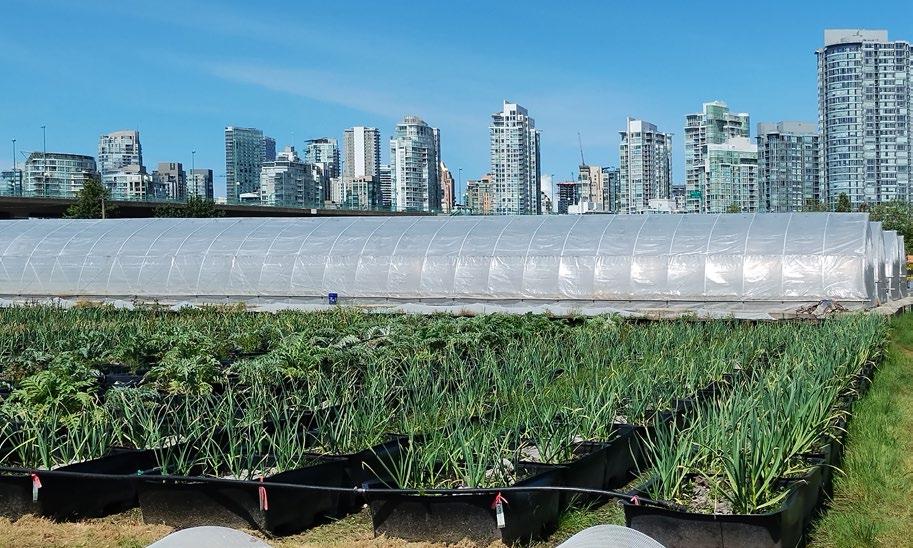

A
vista of tall towers and multi-million-dollar condos overshadow three acres filled with approximately 4,000 growing containers housing everything from potatoes, herbs, and salad greens to fruit trees and more
The farm operates as a social enterprise, which means that it sells its produce and reinvests the profits back into the farm.
“Our CSA programme currently has 75 members with space for 100,” Farmer explains. Every Wednesday afternoon from 2:00 pm to 6:00 pm (rain or shine), starting at the end of May and running through mid-October, the farm gate opens, and fresh produce is available for sale to the general public. Customers are thrilled with the wide variety of veg they can choose from.
Healthy soil, of course, grows healthy plants. But here, connections grow healthier communities and lives
As we chatted and walked the perimeter of the three-acre farm, we strolled past apple trees, newly planted potatoes, garlic, and containers primed for planting eggplants and okra. The farm has four greenhouses. Two are home to tomato plants, the farm’s most lucrative cash crop, always in demand from the local restaurants where the farm sells its produce. Never forgetting the community it was created to serve, one-third of what is produced is donated back to other social organisations in the DTES.
Community outreach is an integral part of the farm’s ongoing mission. Tours are offered to the public and school groups, while field days are available for farm staff to visit other urban farms in the city.
“We open our gates as much as possible,” Farmer says. “My sole objective as Executive Director is to make sure that Sole Food is around to serve the community.”
As my visit to the farm concluded, I couldn’t help thinking about something I’d read on the farm’s website: “At Sole Food Street Farms, individuals are given the opportunity to work with living soil, grow fresh food, develop new skills, and spend their days in an environment that supports the healing of body, mind and soul.”
Healthy soil, of course, grows healthy plants. But here, connections grow healthier communities and lives. 3
Footnotes:
1. Sole Food Street Farms (solefoodfarms.com)
2. Research on a Vulnerable Neighborhood—The Vancouver Downtown Eastside from 2001 to 2011 - PMC (pmc.ncbi.nlm. nih.gov/articles/PMC3665976)


You’ve probably seen it before—plants that look absolutely perfect during the grow. Fat leaves. Rich colour. Everything’s firing. But then harvest rolls around, and the final product doesn’t quite hit. It’s not what you hoped for after months of effort.
More often than not, the issue can be nitrogen. Or more specifically, too much nitrogen too late in the game
In living soil, we’re not just feeding the plant—we’re managing a whole ecosystem. That means playing the long game. Getting the best possible finish isn’t about stripping things away in a panic at the end. It’s about setting things up from the start so the soil winds down naturally, right in sync with your crop.
When things are dialled in, you’ll notice your plants start to “fade” toward the end—those deep greens shifting into golds, purples, and reds. That’s not just visual drama. It’s part of a natural shutdown process.
As harvest approaches, plants begin to pull nitrogen from older leaves and transfer it to their flowers. That’s senescence—the plant’s way of tying up loose ends. It breaks down chlorophyll (which contains a lot of nitrogen) and moves those nutrients to where they matter most.
As harvest approaches, plants begin to pull nitrogen from older leaves and transfer it to their flowers. That’s senescence—the plant’s way of tying up loose ends
If your soil is still pumping out nitrogen at this stage, that process stalls. The plant thinks it has time, stays green, and continues to grow. The result? More chlorophyll in the final product and less time for those finishing touches—aroma, flavour, and smoothness.
Plants make choices. When there’s lots of nitrogen around, they choose growth—leaves, stems, and size. But there’s a trade-off. All that rapid expansion can come at the cost of resin, oils, and secondary compounds that define quality.
Plants make choices. When there’s lots of nitrogen around, they choose growth—leaves, stems, and
Growers call this “soft growth.” The plants look huge but feel spongy. Stems bend under the weight. Pests and diseases creep in. The canopy becomes dense and humid, making it easier for things like powdery mildew to thrive. Meanwhile, the plant’s energy is going into fluff, not into the stuff that tastes amazing.


flavour or effect—whether it’s tomatoes, herbs, or peppers—this is where quality can get lost. Bigger isn’t always better if the product is bland.
Here’s something that surprises a lot of newer growers: you can get underwhelming. That’s because when niplant to bulk up, it can stretch the flavour and aroma compounds too thin. The result? A diluted product. Flashy on the outside, forgettable on the inside.
Allowing nitrogen to taper off as the plant matures helps shift the focus from volume to depth, from mass to quality. That’s where the magic happens.

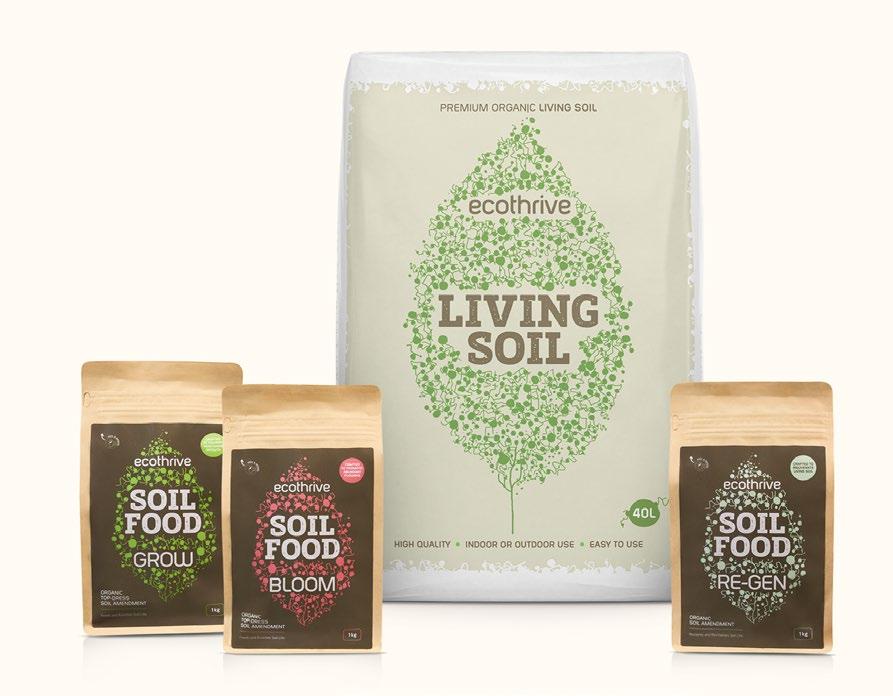
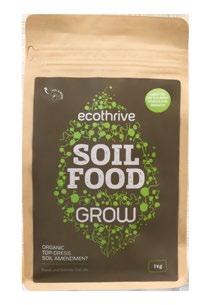




Good inputs. Solid timing. A little patience. That’s how you finish strong
Living soil doesn’t come with a feeding chart. Instead, you rely on amendments and biology to do the work over time. The trick is to set things up so nitrogen peaks during veg and naturally fades as flowers ripen.
One way to do that is by layering different types of nitrogen inputs:
• Fast-release (short burst): These are like kindling— great for getting young plants going, but used up quickly. Think blood meal or soluble soy amino acids.
• Medium-release (steady burn): These carry you through the bulk of the vegetative stage. Meals made from fish, feather, or insect frass fit here.
• Slow-release (long tail): These take their time, offering a slow trickle of nitrogen even late in flower. Neem cake, alfalfa, bone meal and well-aged compost are solid options.
Start with a mix of all three, and you’ll build a nutrient curve that rises and falls with your plant’s life cycle. By the time you’re approaching harvest, the soil has eased off the gas pedal all on its own.
Nitrogen gets a lot of attention, but it doesn’t work in isolation. If you want to steer your plants toward a proper finish, there are two other nutrients to pay close attention to:
• Potassium helps with flower development, sugar movement, and enzyme activity. It’s like the engine room for the final push. As nitrogen drops, potassium should take the lead.
• Calcium keeps the structure strong. Without it, fast-growing tissue from earlier nitrogen loads can end up soft and floppy. With enough calcium, your plants build sturdy frames that can carry heavy flowers without breaking down.
Get the balance right, and you’ll see it in every part of the plant— from root zone to resin production.


If you can get the fade to happen on time—and let your soil wind down gracefully—you’re going to see it (and smell it, and taste it) in your final harvest
Forget the old-school idea of flushing everything at the end to “clean things out.” That might help in synthetic systems, but in living soil, it’s too late by then. What really works is building a taper—a soft landing, not a crash.
When nitrogen naturally fades during the final stretch, the plant wraps up its cycle smoothly. That’s how you get fragrant flowers or fruit with true-to-type flavour.
Managing nitrogen in living soil isn’t about cutting corners or chasing shortcuts. It’s about planning ahead, feeding with intention, and listening to your plants as they finish. If you can get the fade to happen on time—and let your soil wind down gracefully—you’re going to see it (and smell it, and taste it) in your final harvest.
Good inputs. Solid timing. A little patience. That’s how you finish strong. 3

BIO Gareth Hopcroft is a certified plant geek and all round organic gardening devotee. Gareth has been involved in the UK hydro industry for 15 years and is currently the owner of Ecothrive; known mostly for bringing frass to the UK scene through his product ‘Charge’. When he’s not talking about indoor growing or microbes, you’ll find Gareth getting his hands dirty on his allotment or falling off his skateboard.
Follow Gareth@ecothrive

Meet Sinéad, the head grower at Aweside Farm, where seasonal, hand-picked flowers are carefully selected for chefs and crafters, and help enhance biodiversity. Her journey began in 2020, marking this as her sixth growing season. Originally an ex-arable field of grass and weeds, the land has been transformed through dedicated work. The team planted 5,500 trees across four acres, established new hedgerows, and created a thriving ecosystem. Many of the trees now stand ten feet tall, providing essential shelter from wind and habitat for pollinators. An acre and a half of woodland at the back features hazelnuts and leads out into a space full of walnuts.
The annual growing area is divided into smaller parcels, with one section designated for annual production through regular plant rotation. The perennial space features year-round herbs, including angelica, mints, and fennel, alongside gladioli and oxalis. There’s also an area for self-seeders, allowing plants to establish much stronger genetics than imported varieties.
Sinéad’s approach began with vegetables, but her interests quickly evolved toward something more meaningful. She discovered that flowers offered not just beauty and culinary possibilities, but something far more important—a lifeline for struggling wildlife. Recognizing that biodiversity is facing a steep decline, particularly in the UK, where numbers are among the worst in Europe, she realized the critical issue wasn’t just habitat loss, but also the absence of adequate food sources for wildlife.
Now focusing on 80% flower production, Sinéad creates dense plantings that serve a dual purpose. She grows far more than needed for harvest, following a simple but powerful principle: take only 50% for market, leaving the remaining 50% for wildlife.





However, building a business around fresh flowers presents significant challenges. A year’s worth of income must be generated in six months, and fresh flowers are demanding, requiring constant attention during peak season when there’s no time for marketing or business development. The solution has been a thoughtful redirection toward dried and preserved products. Sinéad builds stock that can be held throughout the year, spreading sales more evenly and reducing the intense pressure of immediate selling. The winter months become opportunities for marketing and business development, rather than periods of financial stress.
More importantly, this approach offers customers a sustainable alternative. While fresh flowers in winter typically come from South Africa, Israel, and Turkey, dried products offer local, environmentally conscious options with improved packaging solutions.
Sinéad’s vision extends beyond simply growing flowers. Her farm demonstrates that supporting wildlife and building sustainable businesses aren’t competing goals - they’re complementary aspects of creating something genuinely meaningful for both people and the planet.
awesidefarm.co.uk







Would you like to be featured as one of our local growers? If you’ve got a garden, grow room, or farm and have a story to share, contact us at: growers@gardenculturemagazine.com
Kat’s growing journey began thanks to both her mum and dad being keen gardeners. Growing up, they would enter garden competitions and win ‘Best Kept Garden in the Village’ awards. Kat and her siblings would spend all their time in the garden doing what you’d imagine kids from a fairy tale would do: collecting bugs, pressing flowers and leaves, and making dens and mud pies. It’s important to establish those roots at an early age; we perceive nature differently when we do.

During her school years, Kat’s interest evolved around plants. She used to attend a gardening club at school, and after moving out and renting her own place, she had the time to start growing flowers and vegetables. Renting has sadly meant a lot of house moves over the years, and that’s not easy with plants. That’s when the idea of an allotment came about, a space that would be only Kat’s, no moving required, just an oasis. And indeed, it has become precisely that: a sanctuary where she can relax and connect with Nature.
There’s something so special about sowing a seed and nurturing it, then planting and watching it thrive. The whole process brings a sense of peace and connection that’s hard to find elsewhere. It’s about slowing down and working in harmony with nature’s rhythm, rather than against it. Design-wise, Kat has acquired largely secondhand items sourced from around the local area and beyond. These include a perfectly usable greenhouse, a decent shed, paving slabs, lots of wood for beds, and pallets for fencing. Even the paint used across the plot was free from their local tip - there is so much benefit to be gained from using what others can’t.
Besides gorgeous sunflowers and sweet peas climbing a stylish archway, Kat has created a cottage garden featuring a wildlife pond, as well as numerous raised beds with a diverse array of vegetables and a crop cage. The space balances beauty with productivity, creating an environment that’s both pleasing to the eye and practical for growing food.





It doesn’t take much to create an oasis for us and all the other creatures that visit our allotments when we’re not there. It’s what the ‘Good Life’ is about: finding joy in simple pleasures and creating spaces where both people and wildlife thrive.
Good Life Cornwall
As grocery prices continue to rise and people seek more effective ways to nourish their bodies, food preservation techniques are gaining renewed attention. The simple act of preparing and enjoying meals with homegrown produce throughout the year is incredibly gratifying! The first step to successfully preserving your bounty is proper harvest. This edition has offered many tips on that topic. Now that you’ve foraged in the garden like a pro let’s explore some of the 5 Cool Ways to Preserve a Harvest.

There is nothing more nightmarish than harvesting pounds of onions and garlic and storing them for the winter, only to find them rotting.This real-life horror show will play out for gardeners who fail to properly cure their harvest before storing it in their cold rooms. Several food and medicine crops require curing before storage, including garlic, onions, potatoes, sweet potatoes, winter squash, dry beans, and peas.The curing process doesn’t require much effort, just time. To prepare onions and garlic for storage, harvest them from the garden without puncturing their skin. Spread them out in a dry and wellventilated room for about two weeks; they’re ready when their necks have hardened. Like potatoes destined for storage, refrain from washing them until you’re ready to cook with them. Peas and beans are cured in their pods and can dry on the vine. Bring them indoors only once the pods are brown and papery. Once inside, place them in a warm, dry spot for two weeks, then open the pods and remove the seeds. Store them in a Mason jar with a lid or a paper bag.
If you have the extra space, freezing a harvest is a quick and easy process. Freezing preserves the taste and nutritional value of a crop by stopping the growth of microorganisms and slowing enzyme activity. Use ecofriendly packaging, squeeze out all the air, and properly label the produce type and the date you froze it. Place the items in an even layer and wait until they’re fully frozen before stacking. Some vegetables, such as broccoli, kale, green beans, corn, and cauliflower, require quick blanching before freezing. Boil them for a few minutes, then transfer to ice water to stop the cooking process. Berries can be placed directly into the freezer after washing and drying, but fruits like apples and peaches should be dipped into a lemon juice solution to prevent browning. Pro tips: Consider dicing peppers, onions, and carrots to freeze for a ready-to-go spaghetti mix. If you live in a region where corn is abundant, buy it in bulk from a local farmer at a fair price toward the end of the season. Spend an afternoon peeling and blanching the corn, then removing the kernels from the cobs. Freeze it in bags and enjoy delicious, locally grown corn all winter long!

Have you ever blanched, peeled, and slowly simmered 40 pounds of tomatoes on the stove into a mouth-watering pizza sauce or marinara, canned it, and enjoyed it almost weekly for months after? If your answer is no, then you haven’t really lived. Garden Culture’s executive editor (and first-time canner), Catherine Sherriffs, is still opening cans of sauce from last summer’s tomato harvest! Sarah Thrush, author of Preserving with a Purpose: Next-Generation Canning Recipes & Kitchen Wisdom, is a phenomenal teacher of this tried-and-true preservation method. Whether it’s a water bath (for high-acid foods) or pressure canning (for low-acid foods), when done safely and correctly with the proper materials, canning can result in significant savings at the supermarket and boost the nutritional content of all your meals. A pressure canner is a one-time investment that pays for itself quickly when you consider the number of jars of preserved food you’ll have in your pantry.We won’t claim that this is the easiest way to preserve your harvest, but we will say that, from start to finish, it’s one of the most enjoyable processes we’ve ever experienced— slow, delicious, and incredibly worthwhile.

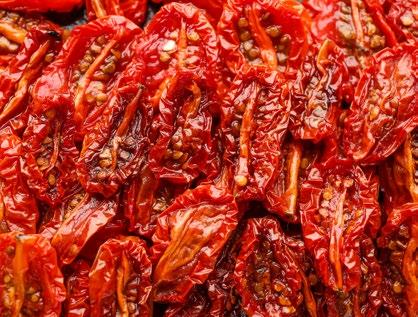
Fermented foods are taking the world by storm for their incredible nutritional value, their benefits for gut health, and because they’re super fun to make! Fermentation uses beneficial bacteria to preserve and boost the nutrients in our food, even adding essential probiotics to support digestive health. It involves cleaning and chopping fruits or vegetables and either placing them in a brine solution with salt and water (or their natural juices) or packing the sliced produce in a fermentation vessel and covering it with brine. For the latter, use a weight to keep the veg submerged. Fermentation takes place at room temperature; check it often and remove surface mould. Once complete, store your fermented product in jars in the fridge. 3


Drying food simply involves removing moisture from fruits and veggies to inhibit bacterial growth. If you have an abundance of herbs you’d like to preserve for cooking or steeping, air-drying on screens or hang-drying them in a well-ventilated area will do the trick. Oven drying is an option, and freeze-drying or dehydrating are also effective methods, but they require special equipment. Produce that has been properly freeze-dried can last up to 25 years because the process removes approximately 99% of the moisture. Other methods typically only remove 70-90% of a food’s moisture content and can only be stored for about a year.

Great Gardening Resources:
• Nettles & Petals: Grow Food, Eat Weeds, Save Seeds by Jamie Walton
• Kitchen Garden Living: Seasonal Growing and Eating from a Beautiful, Bountiful Food Garden by Bailey Van Tassel



































































































































































